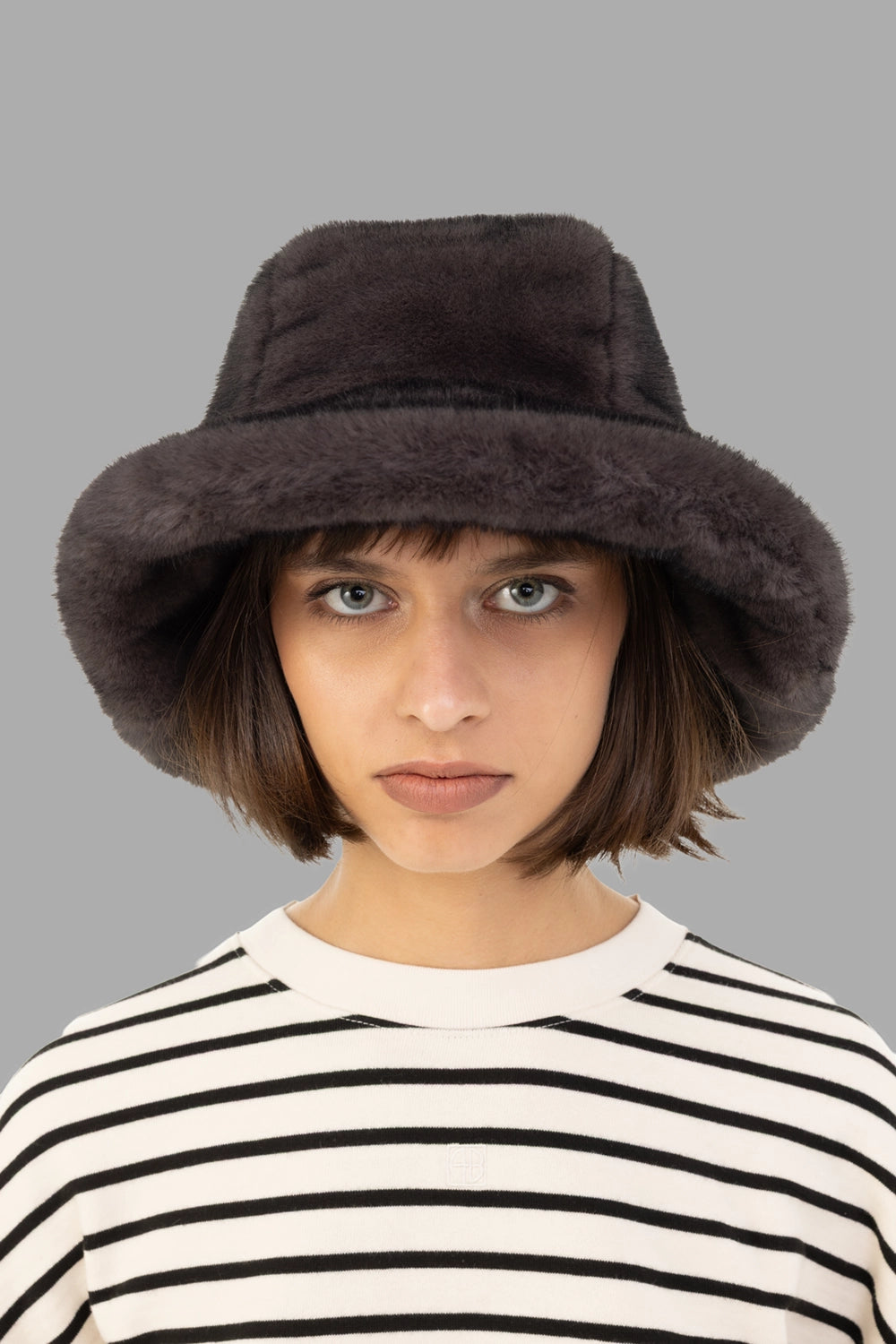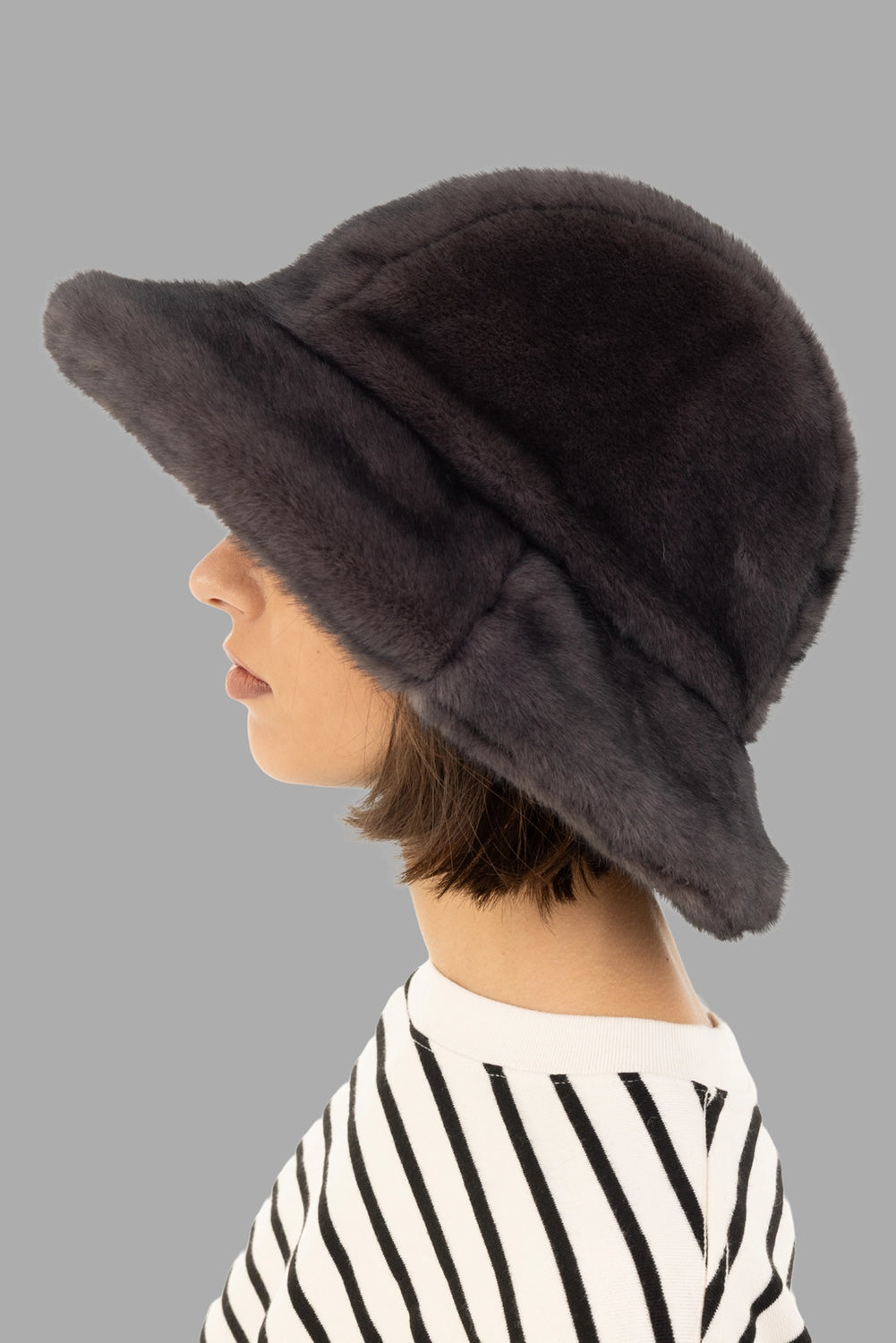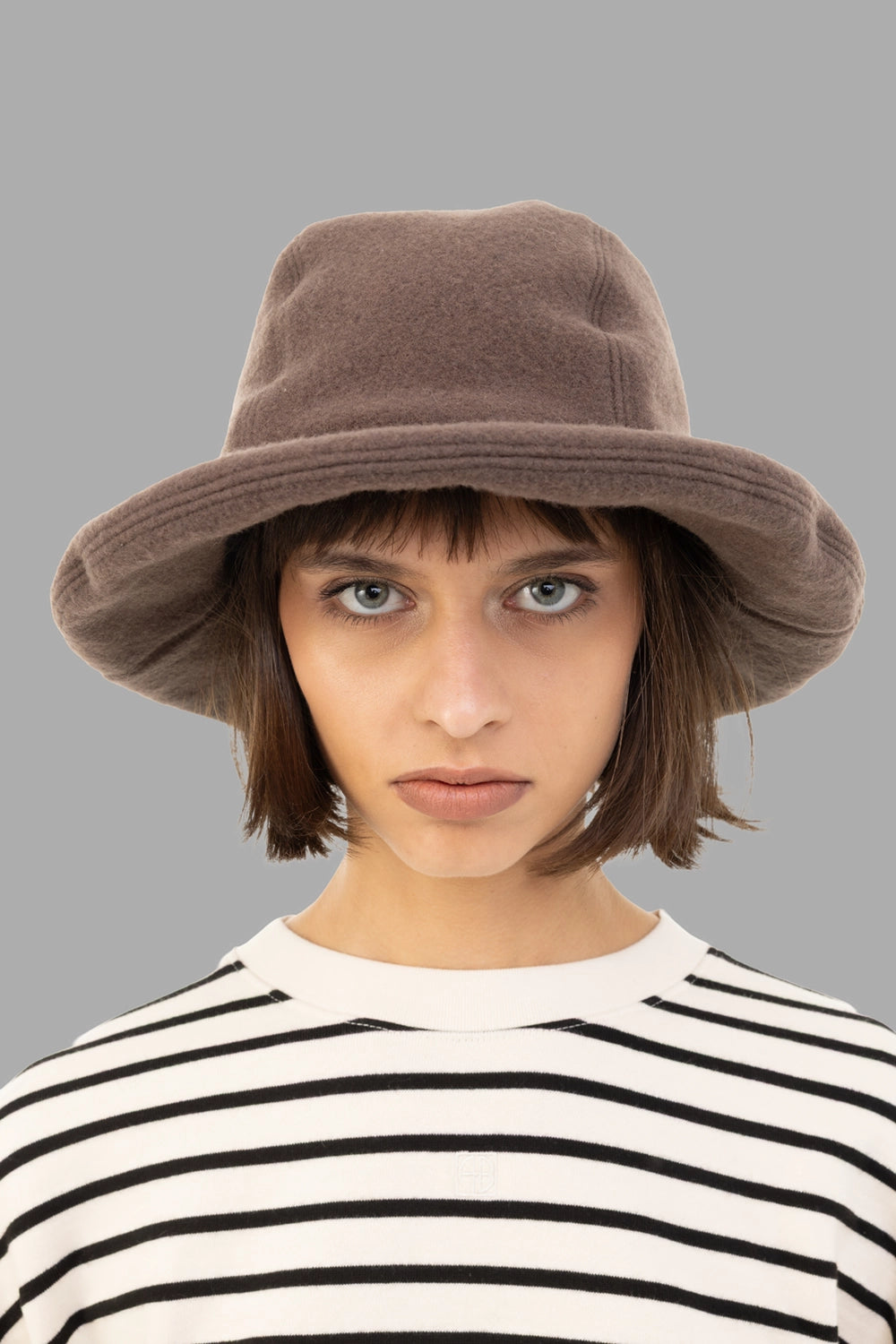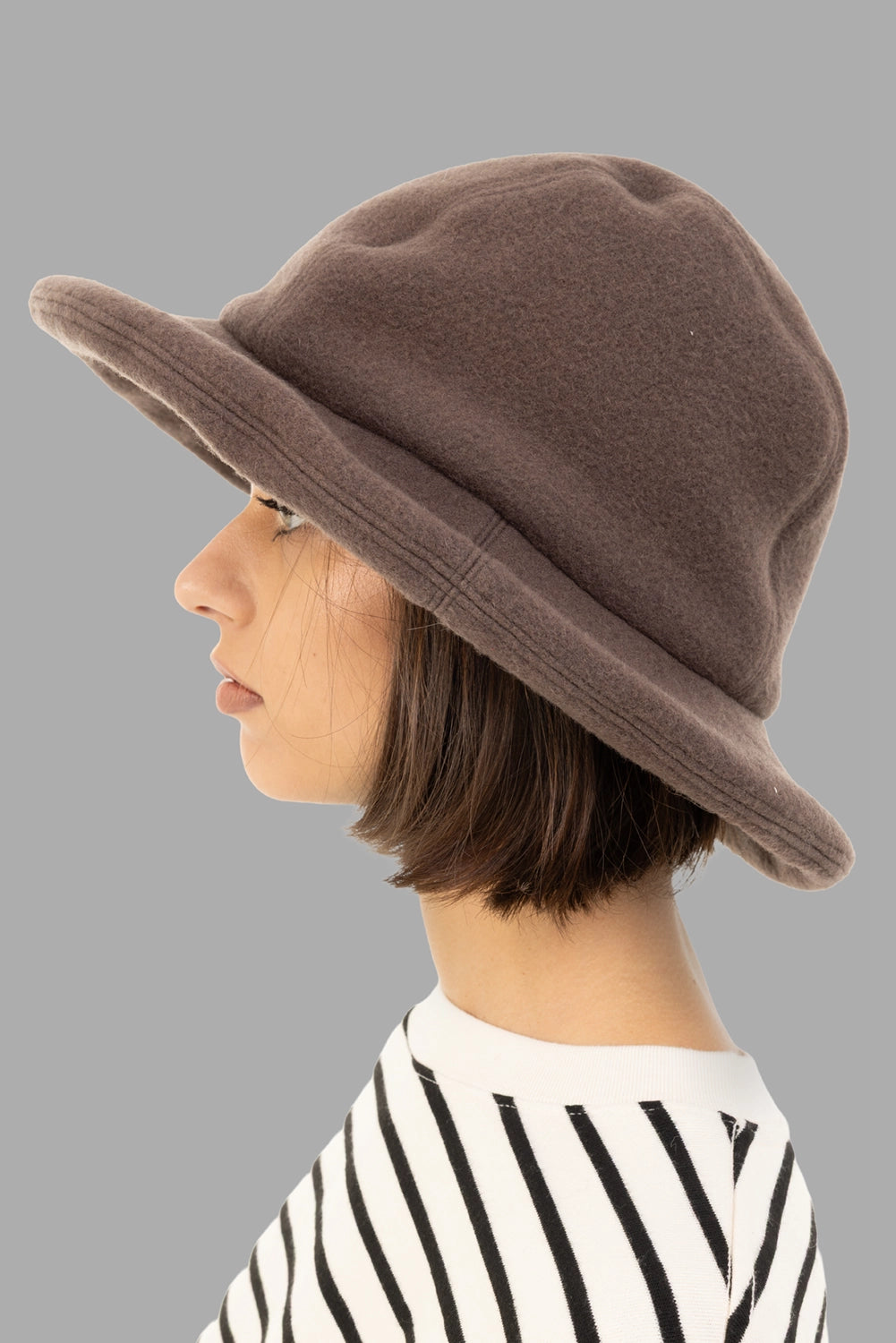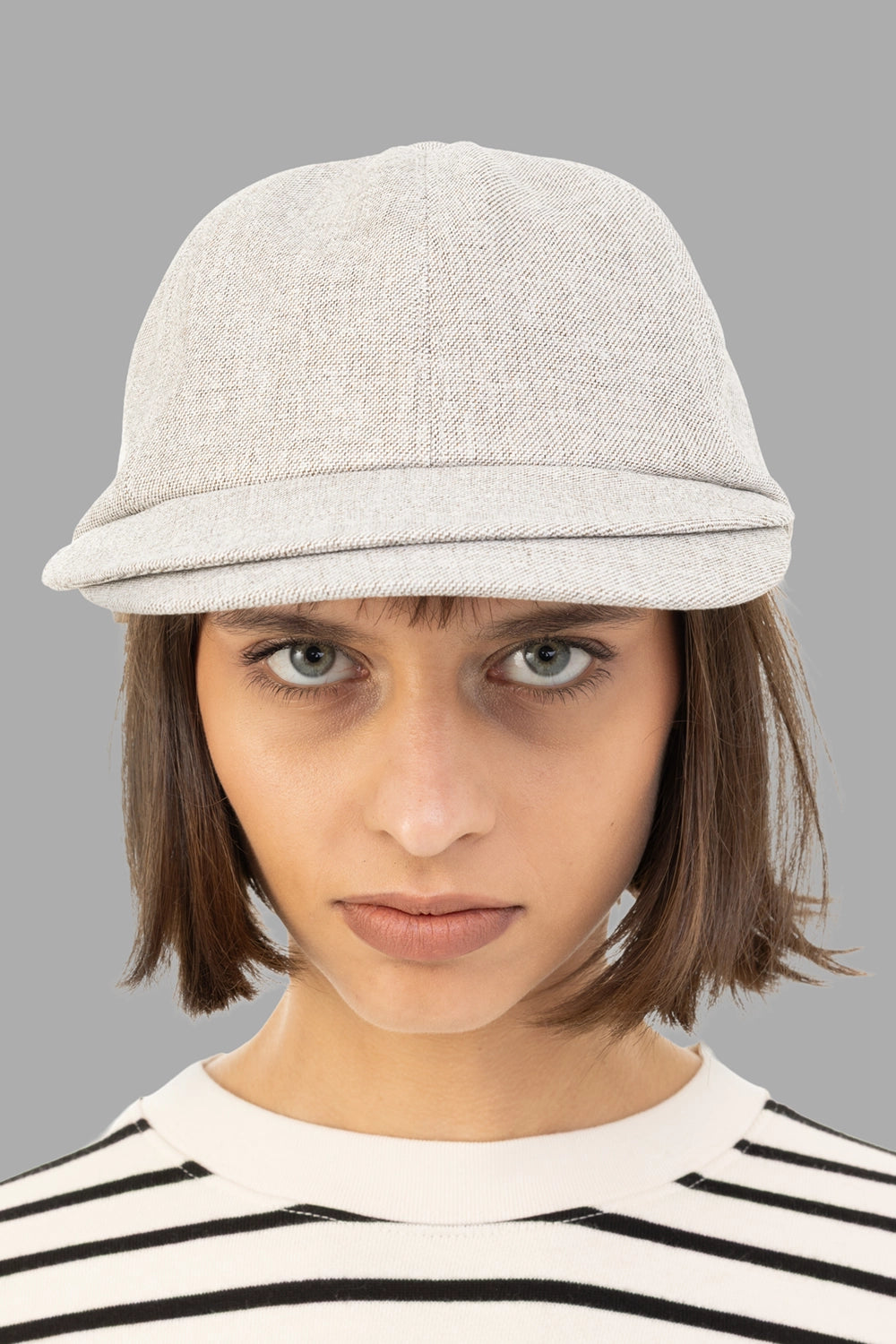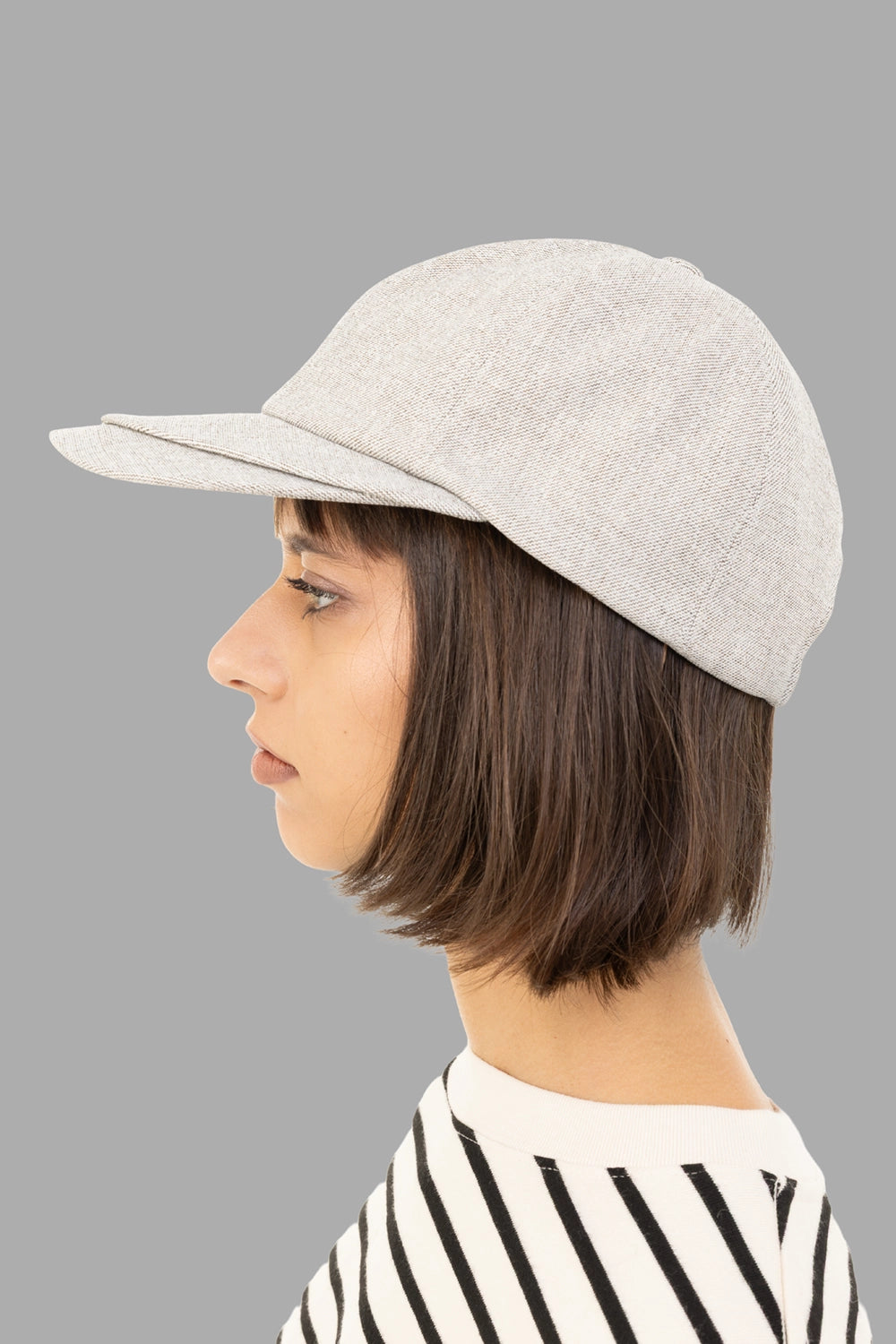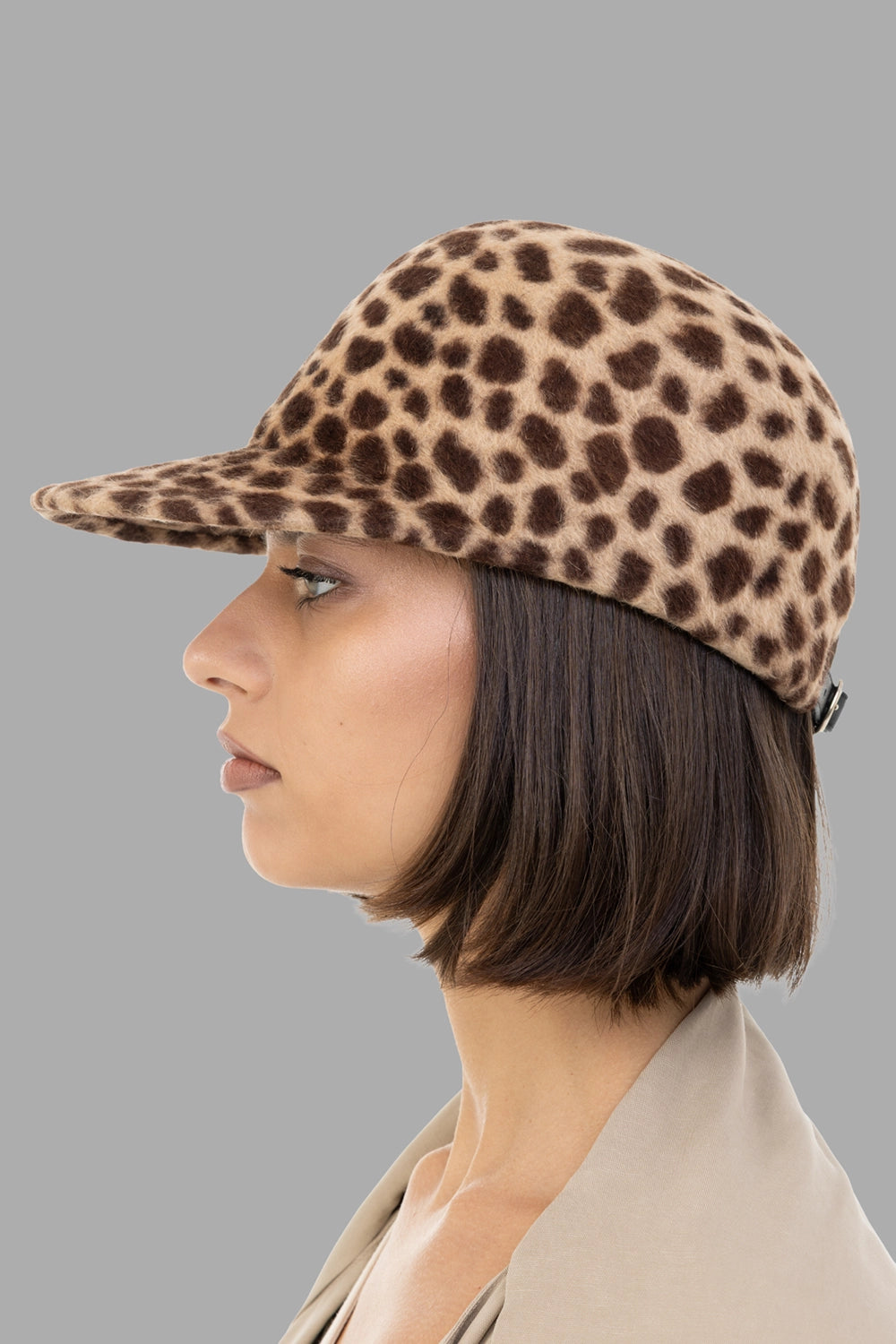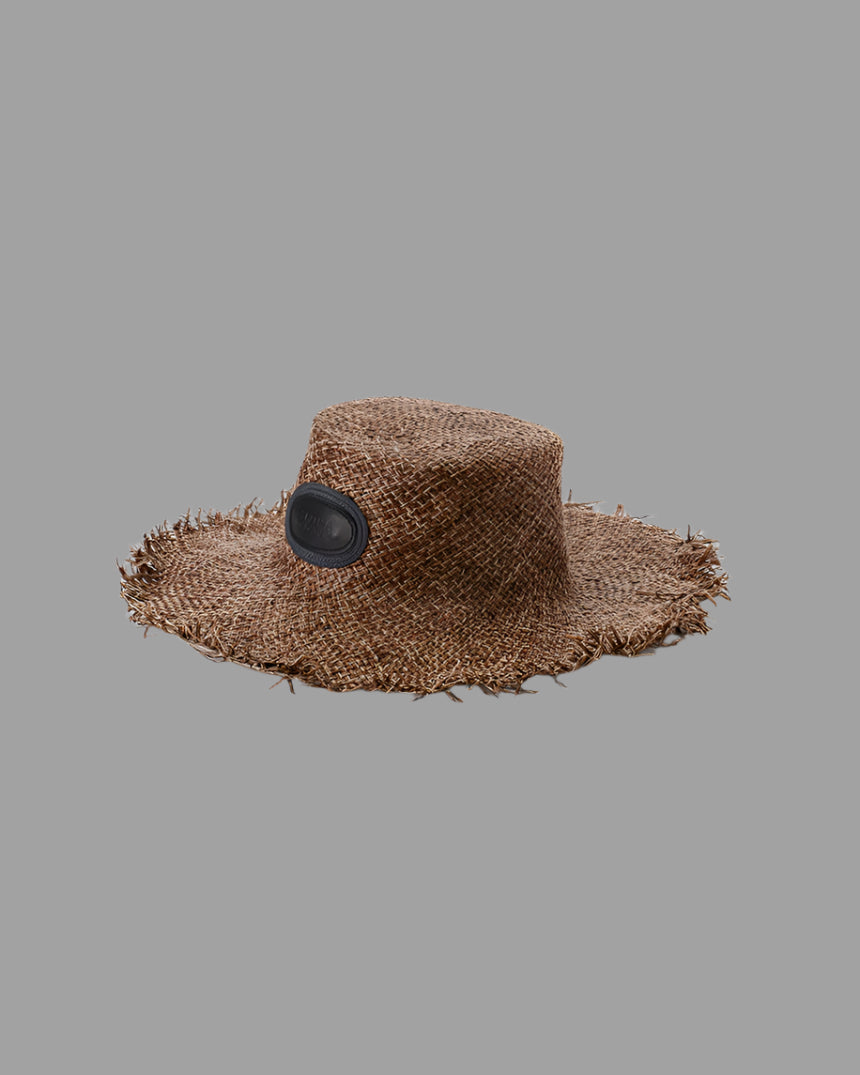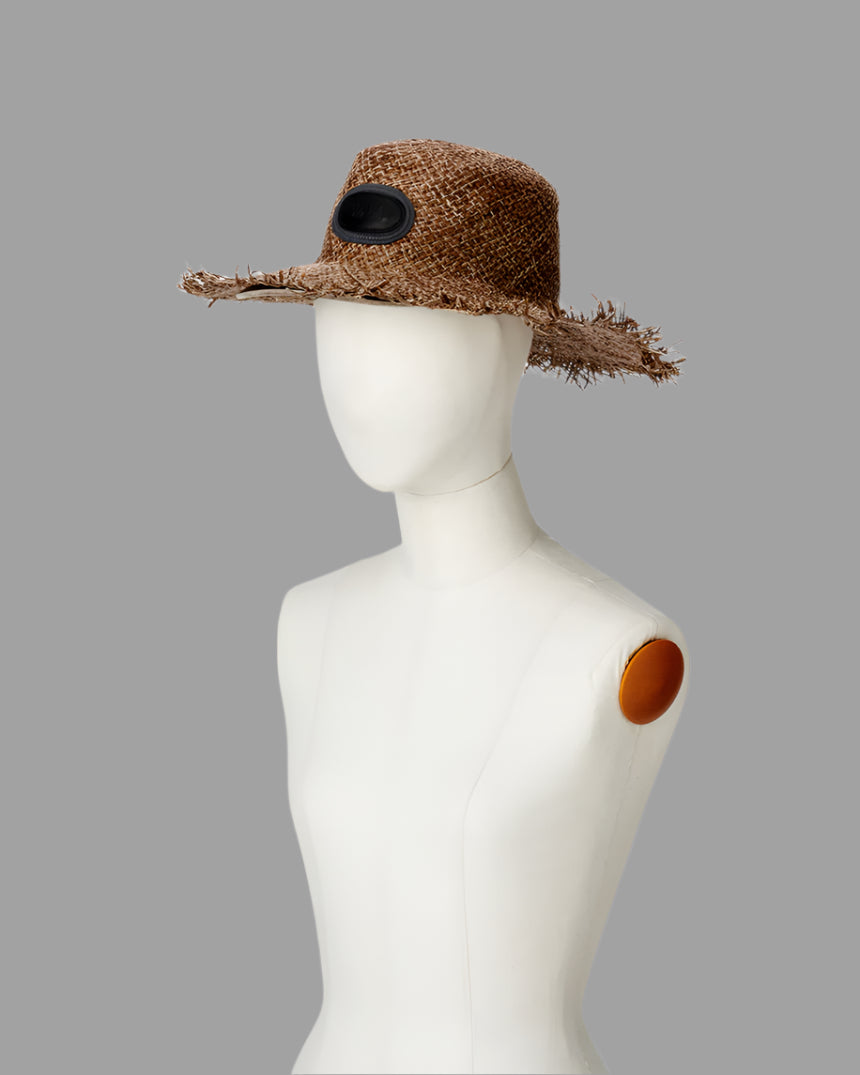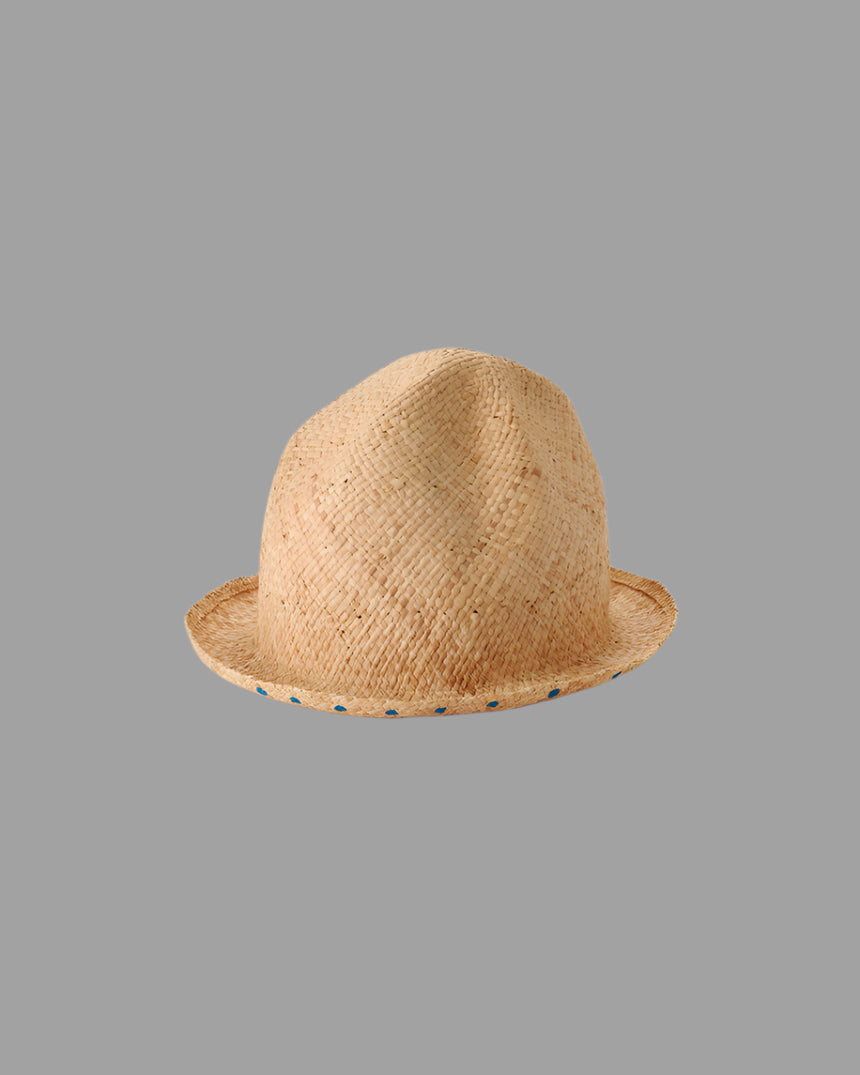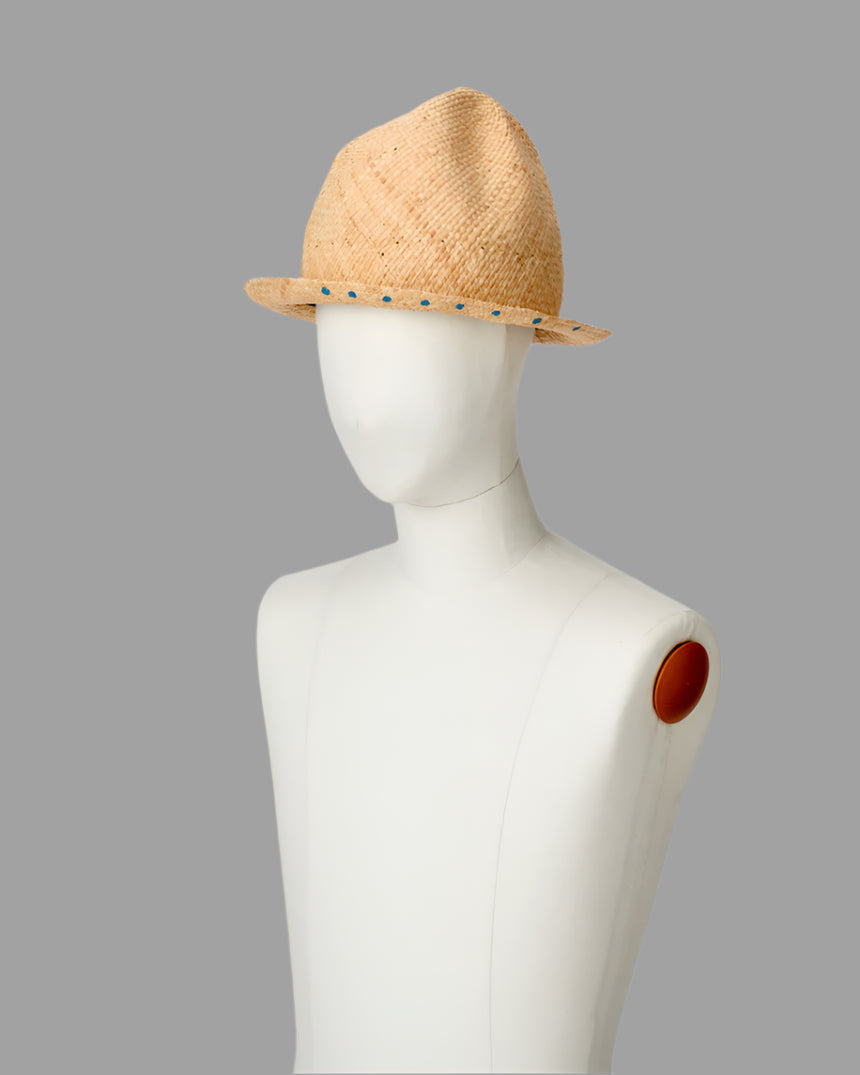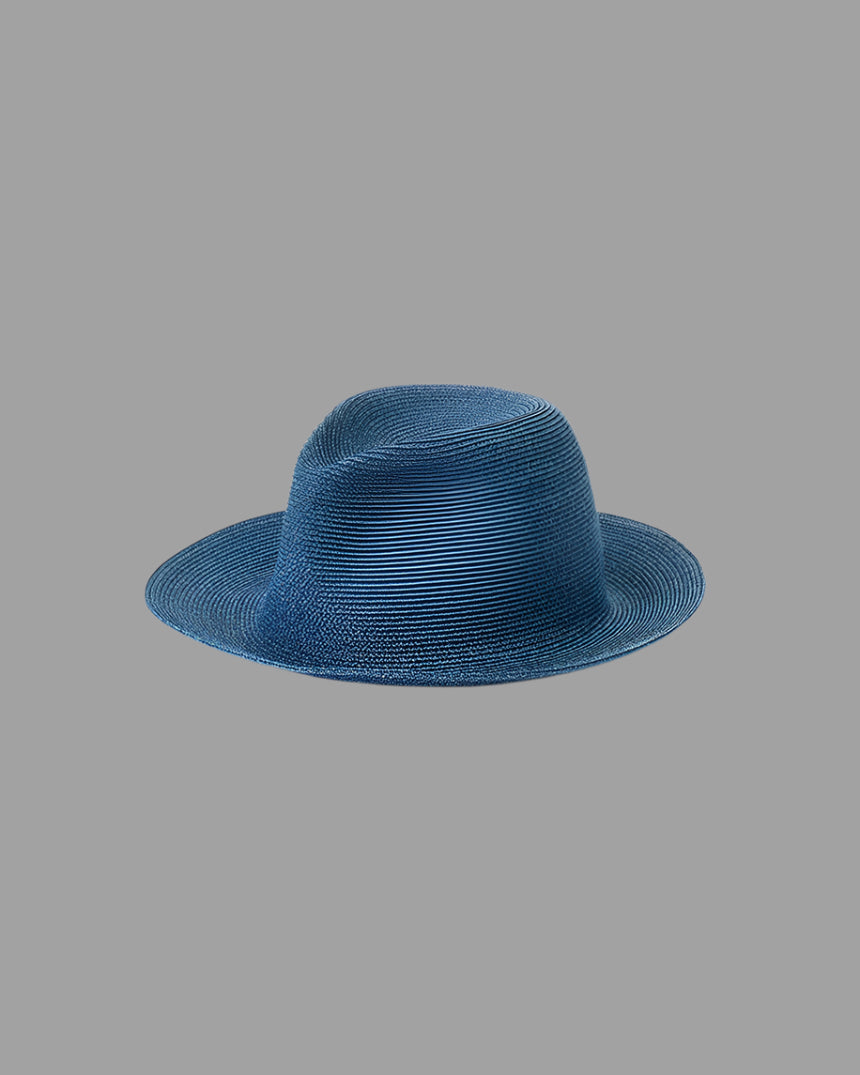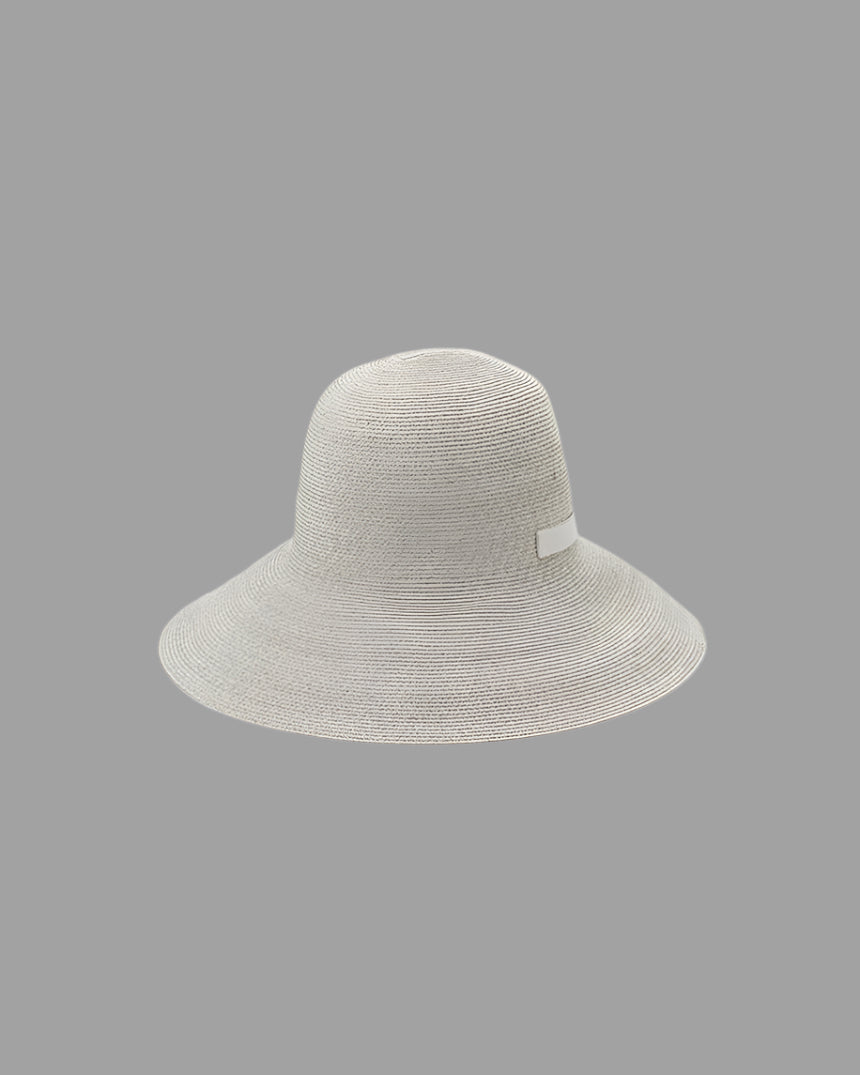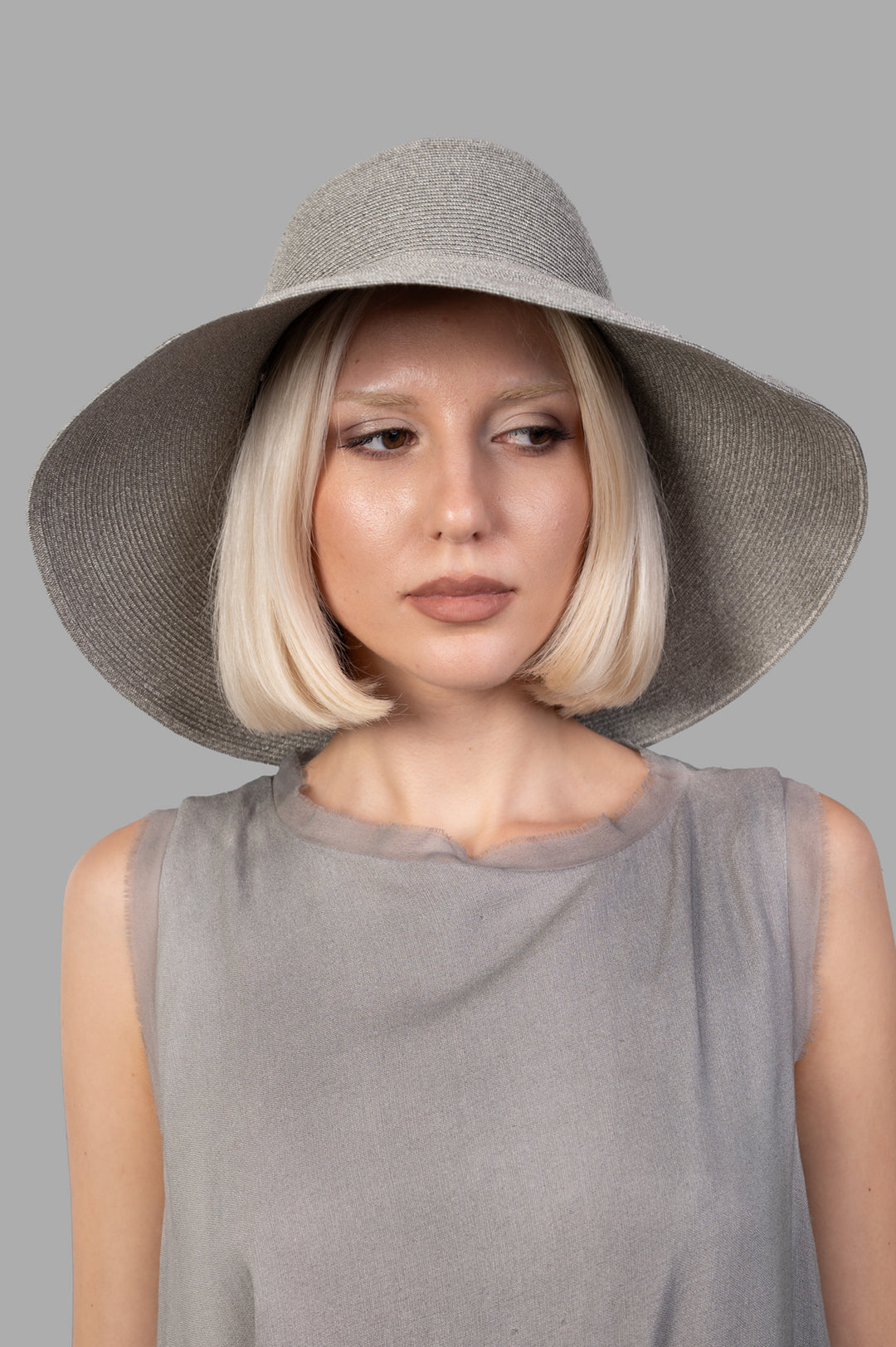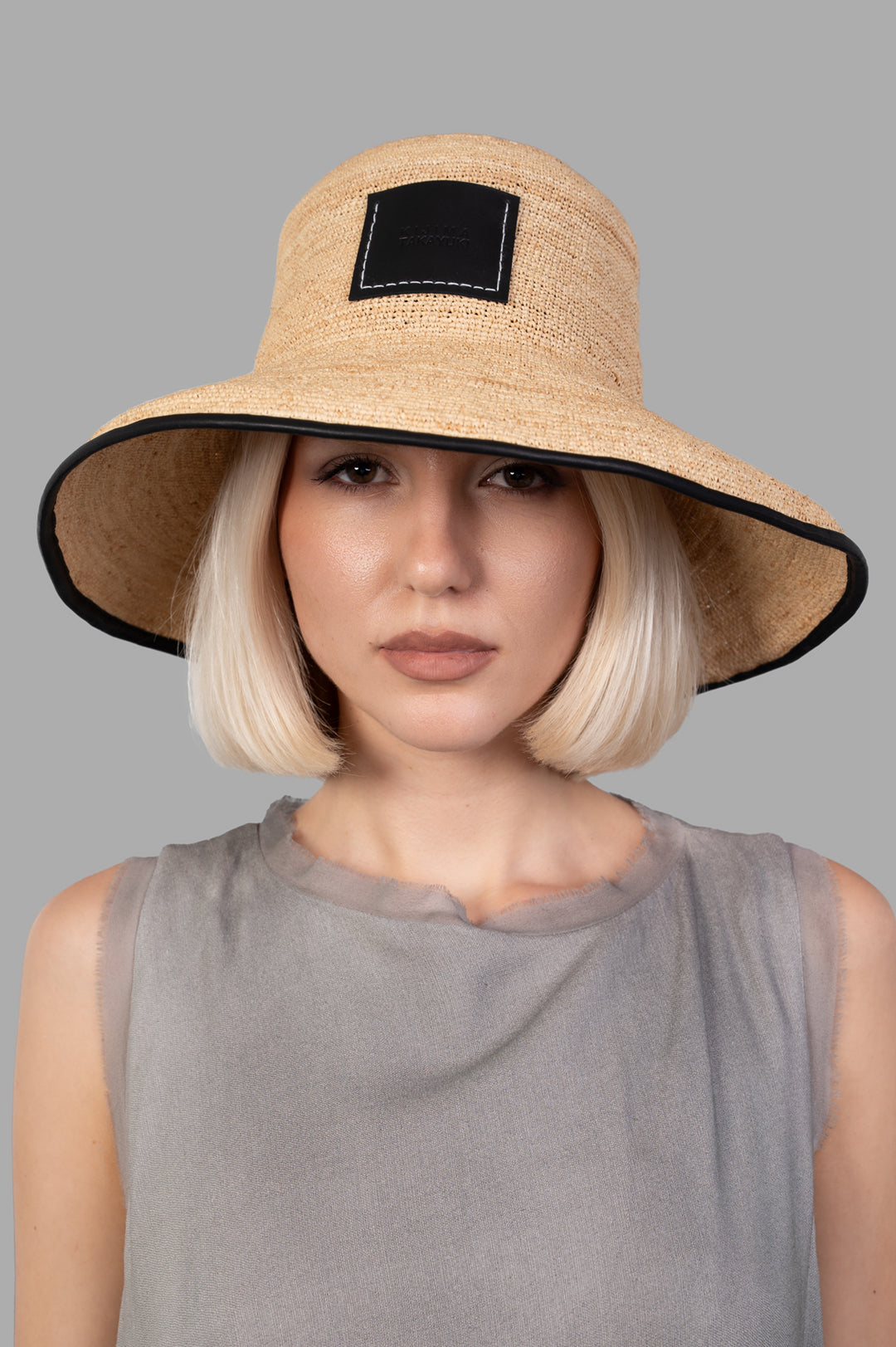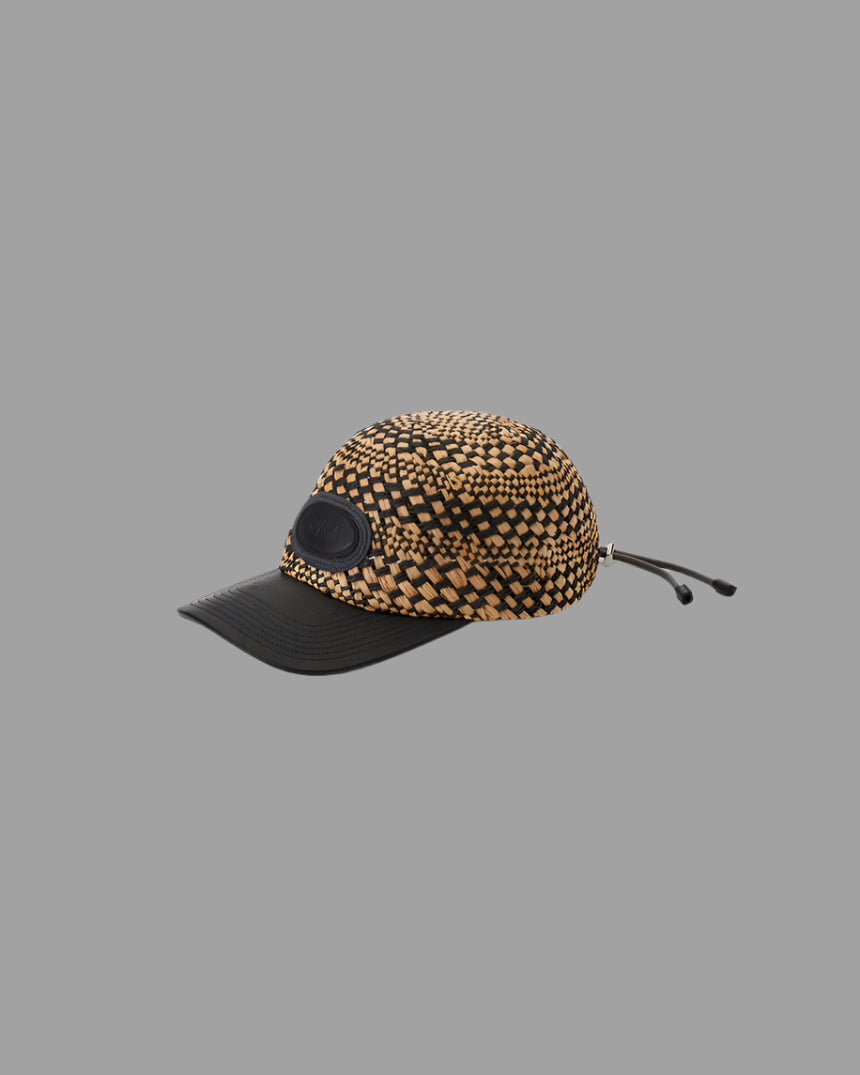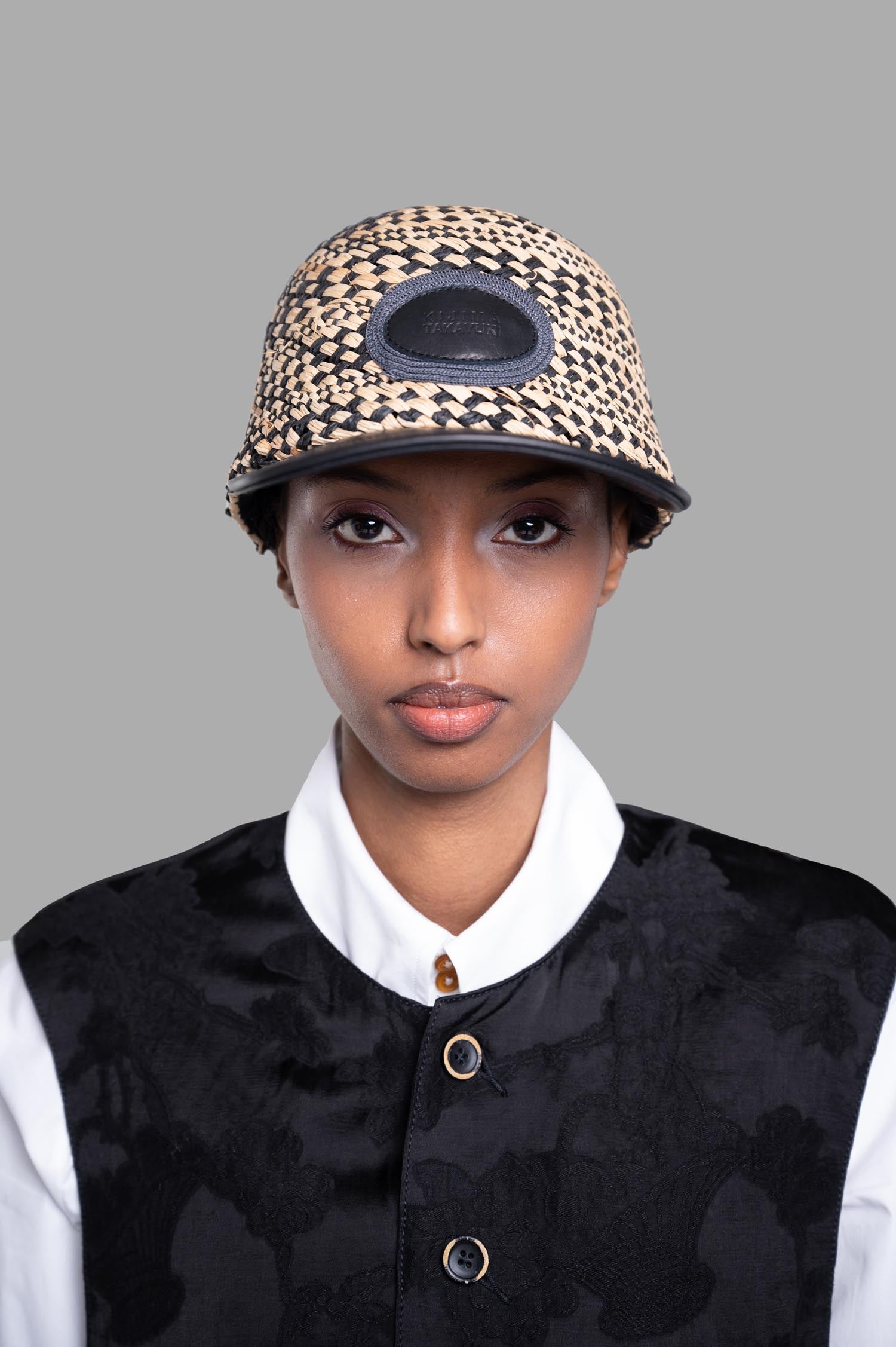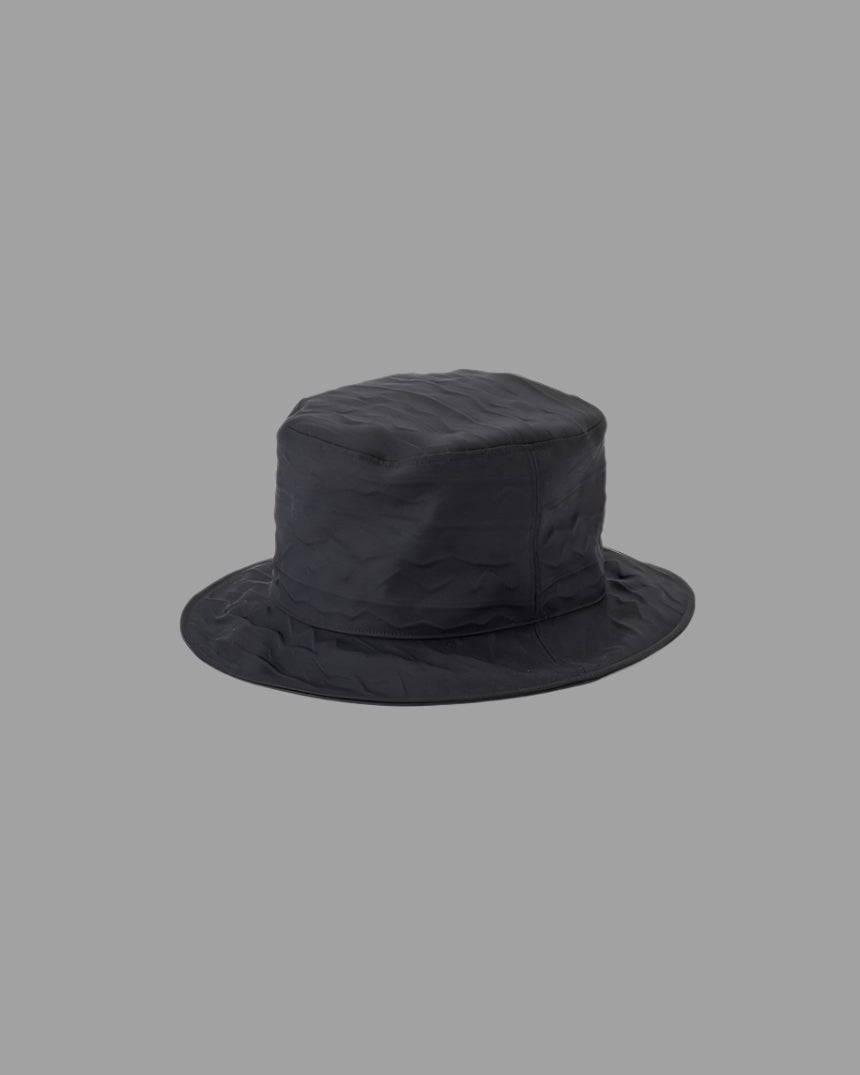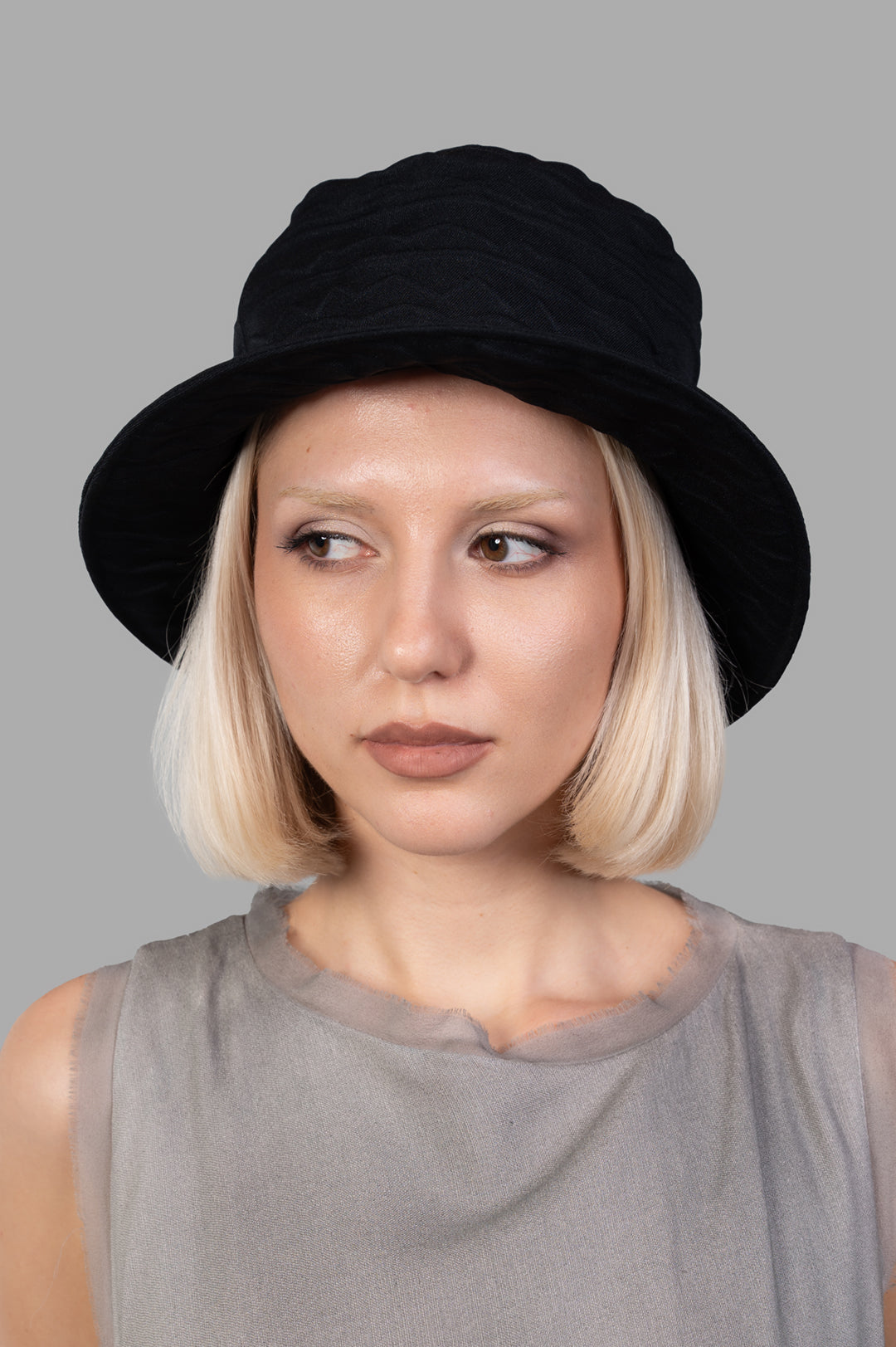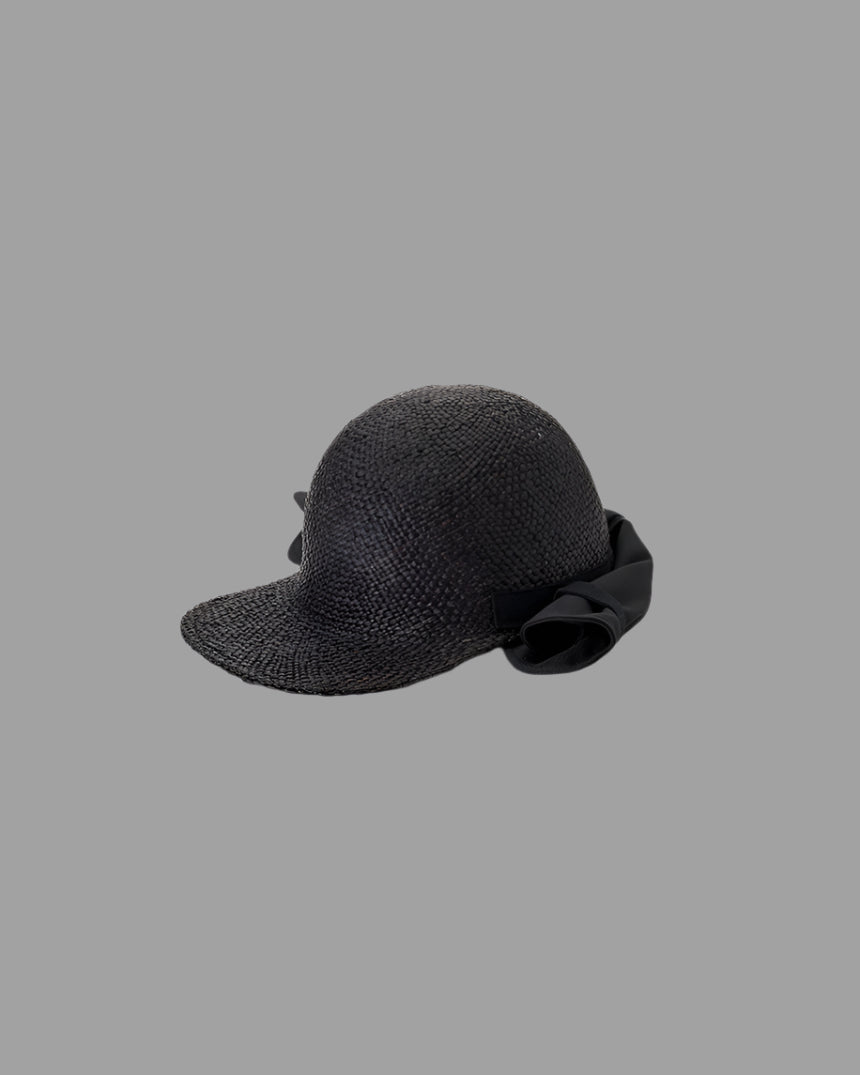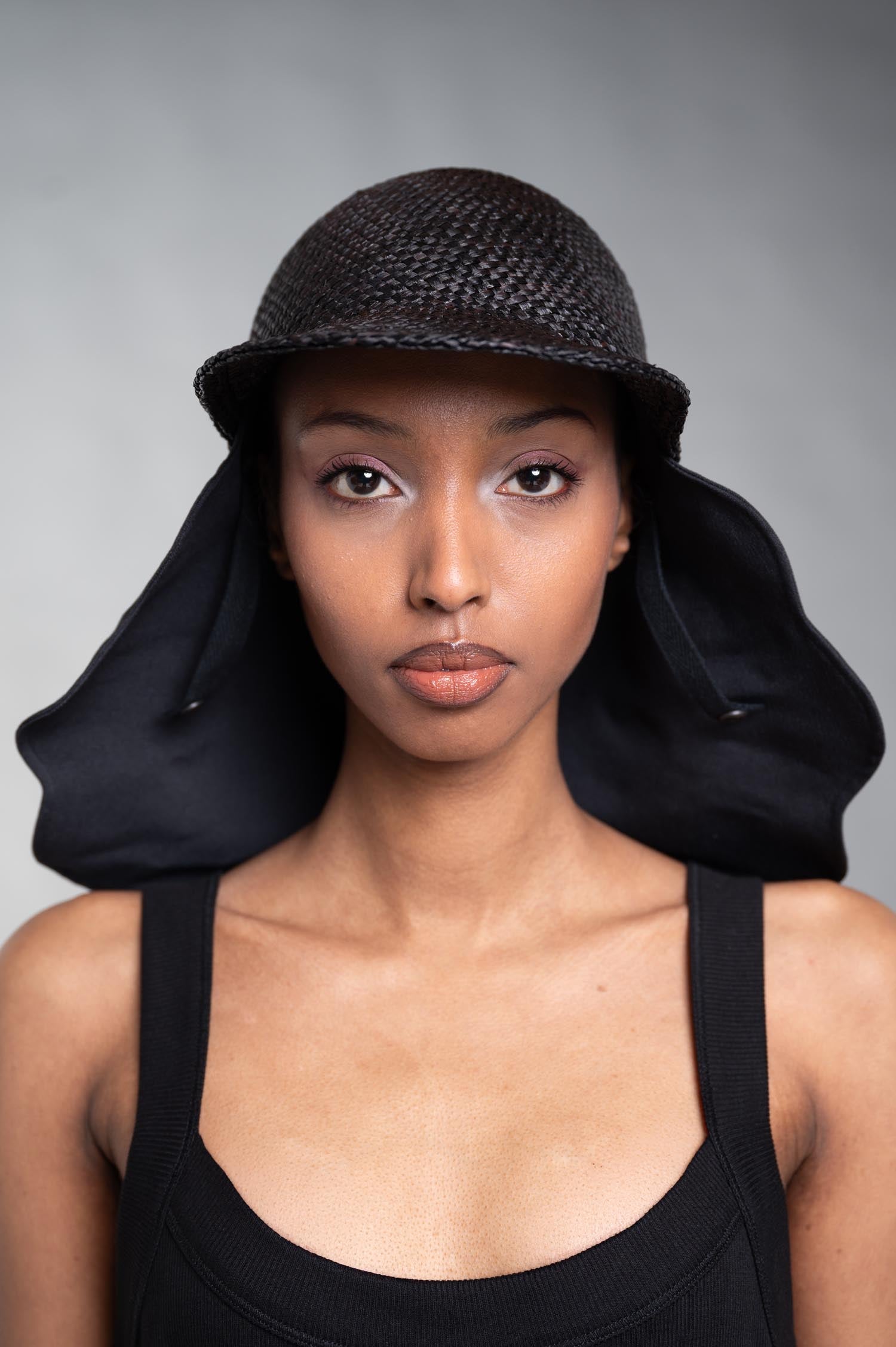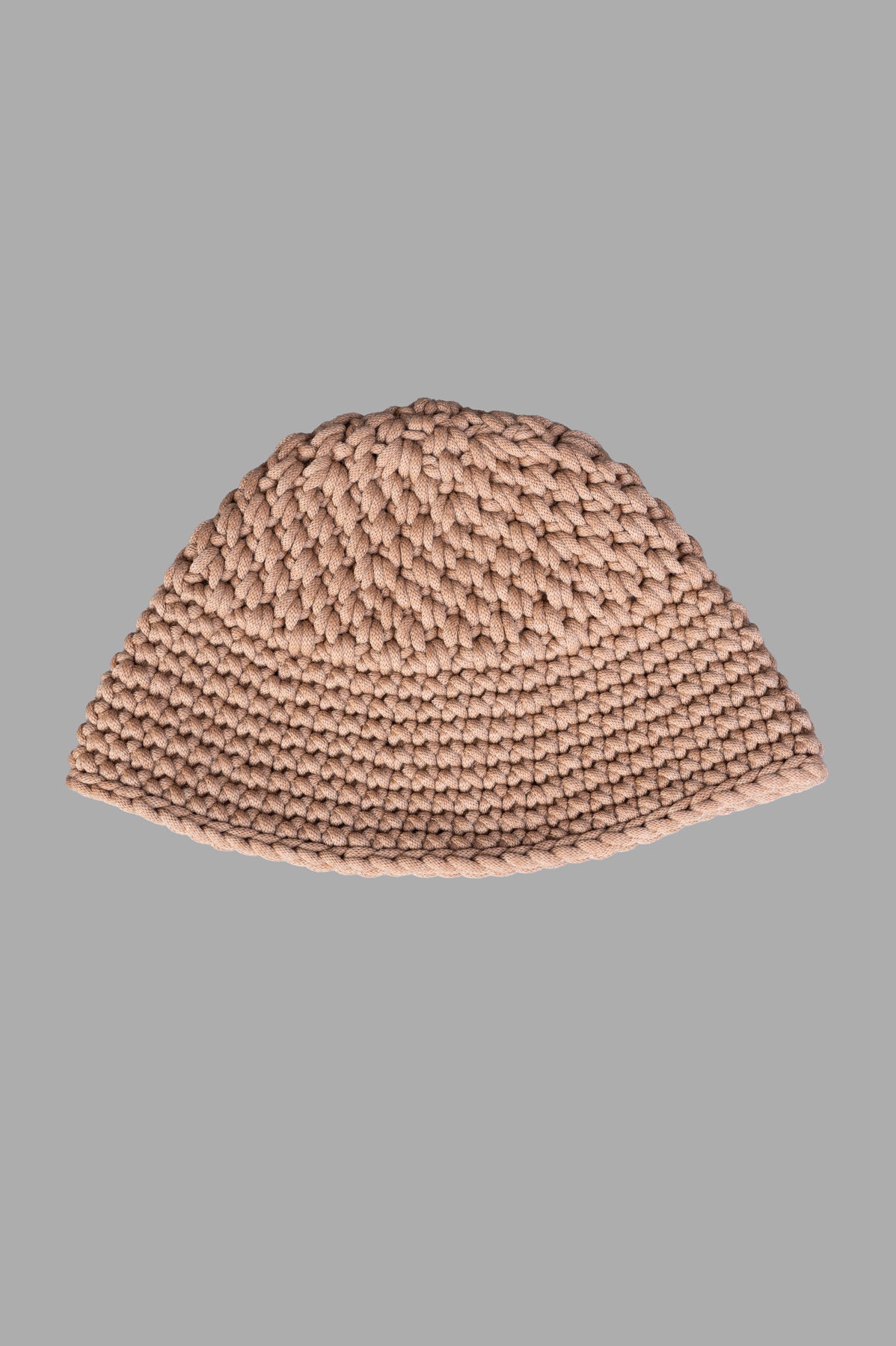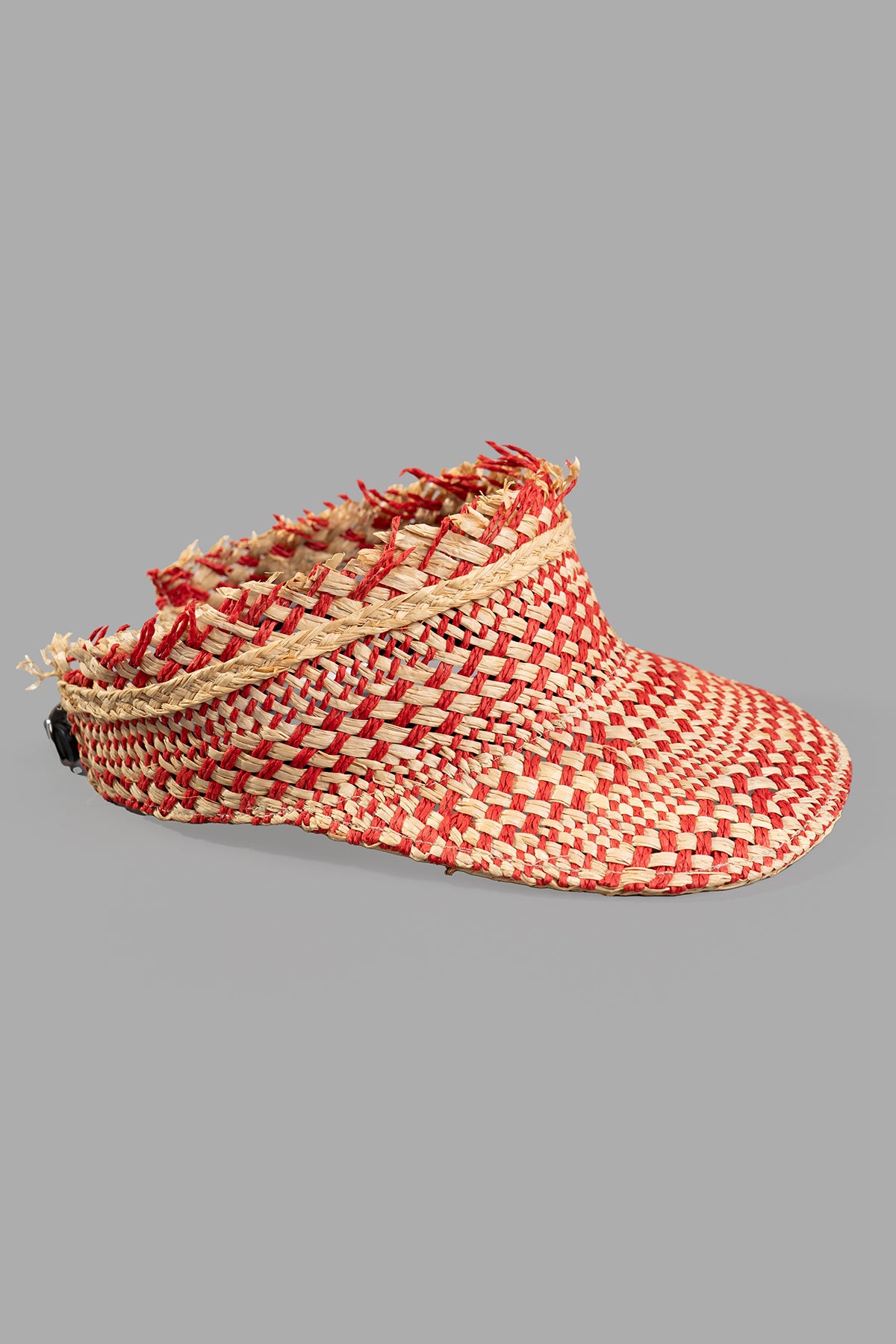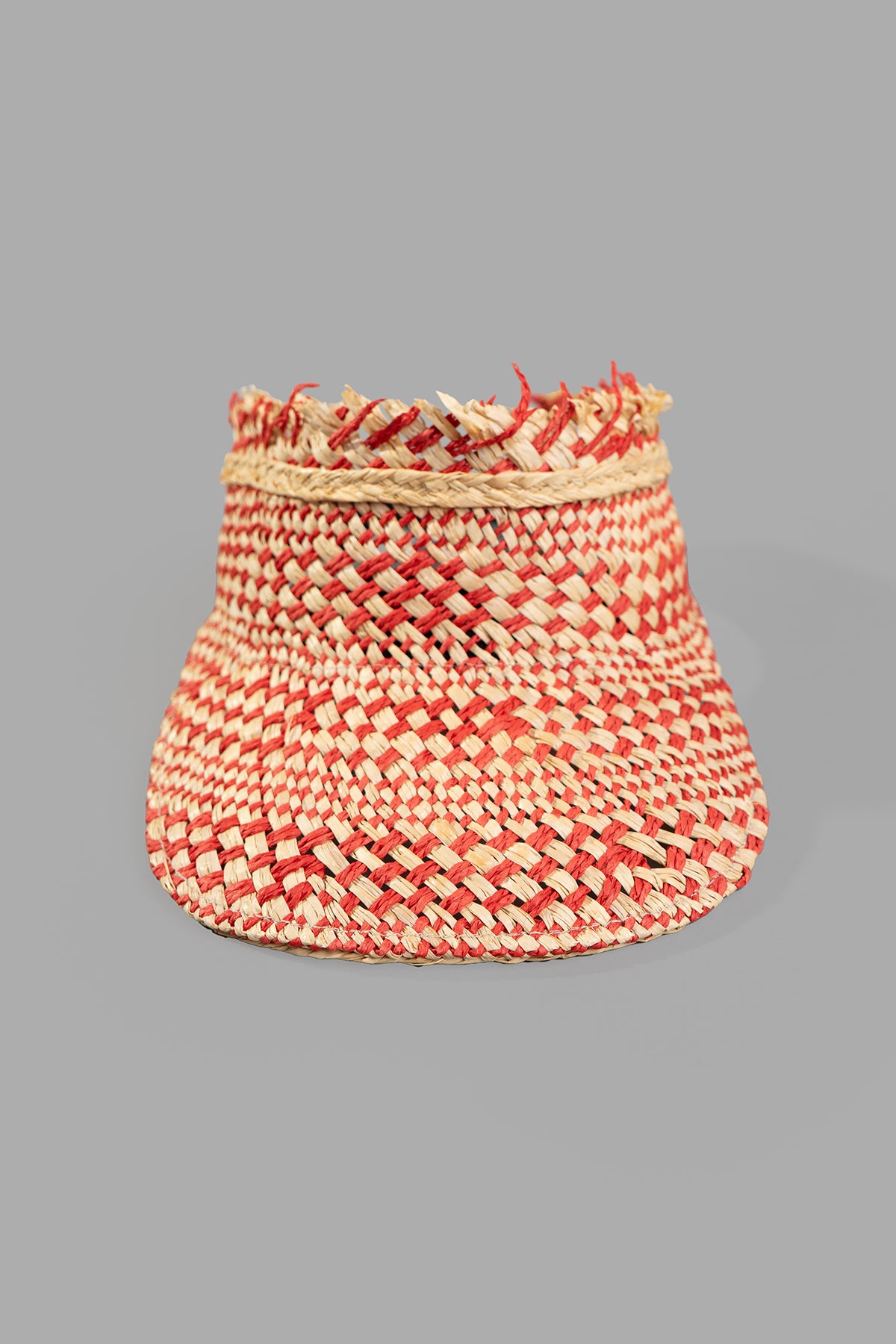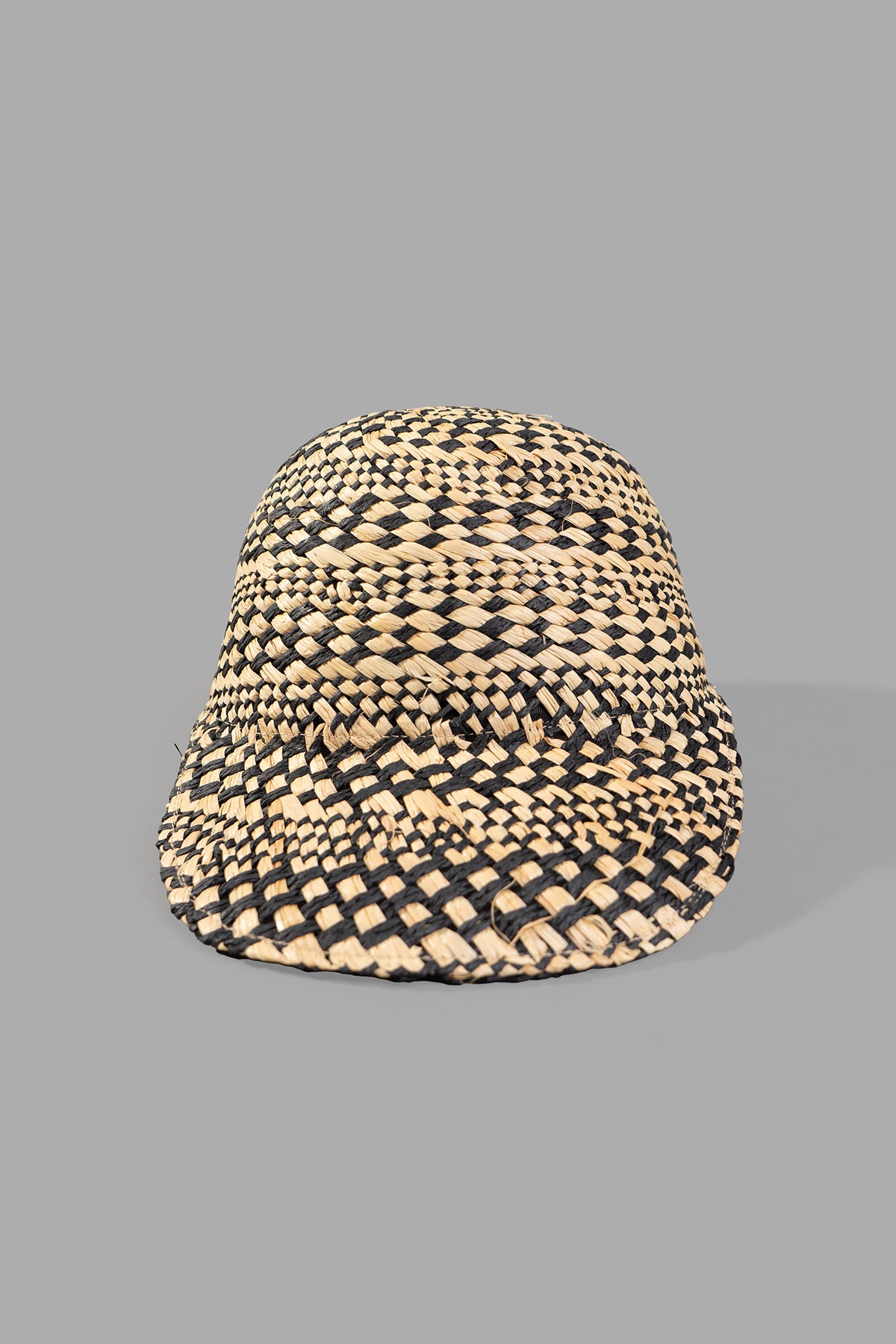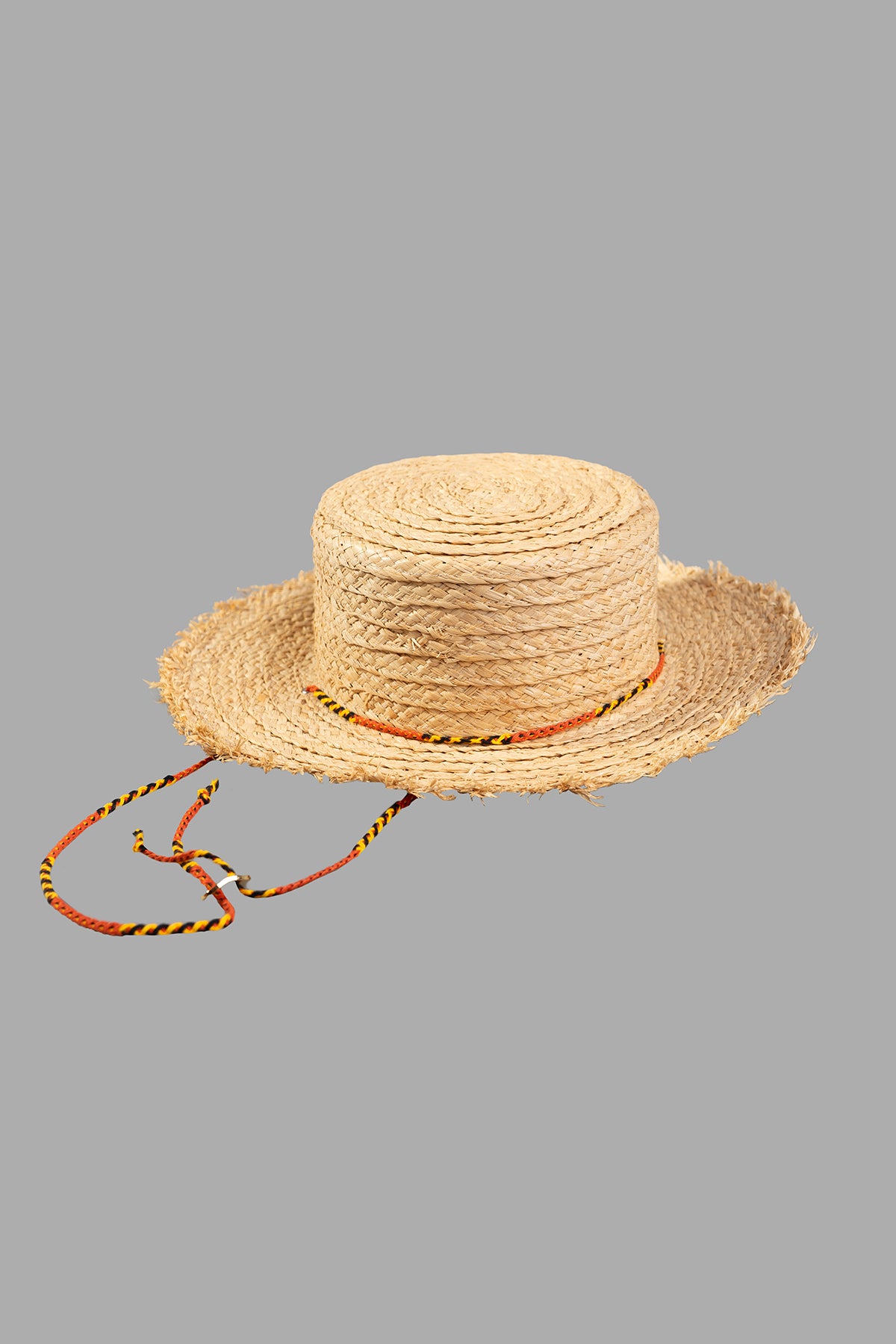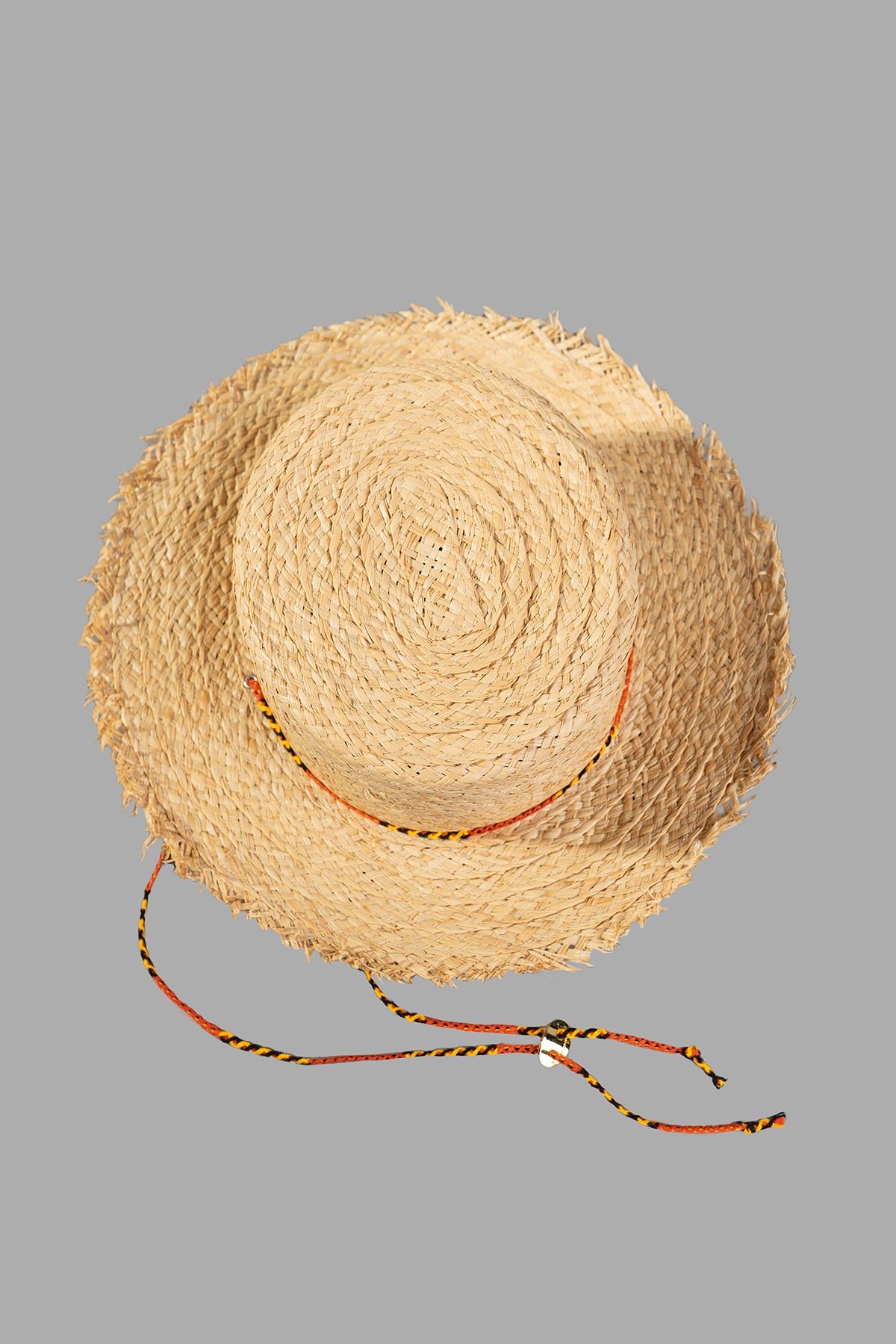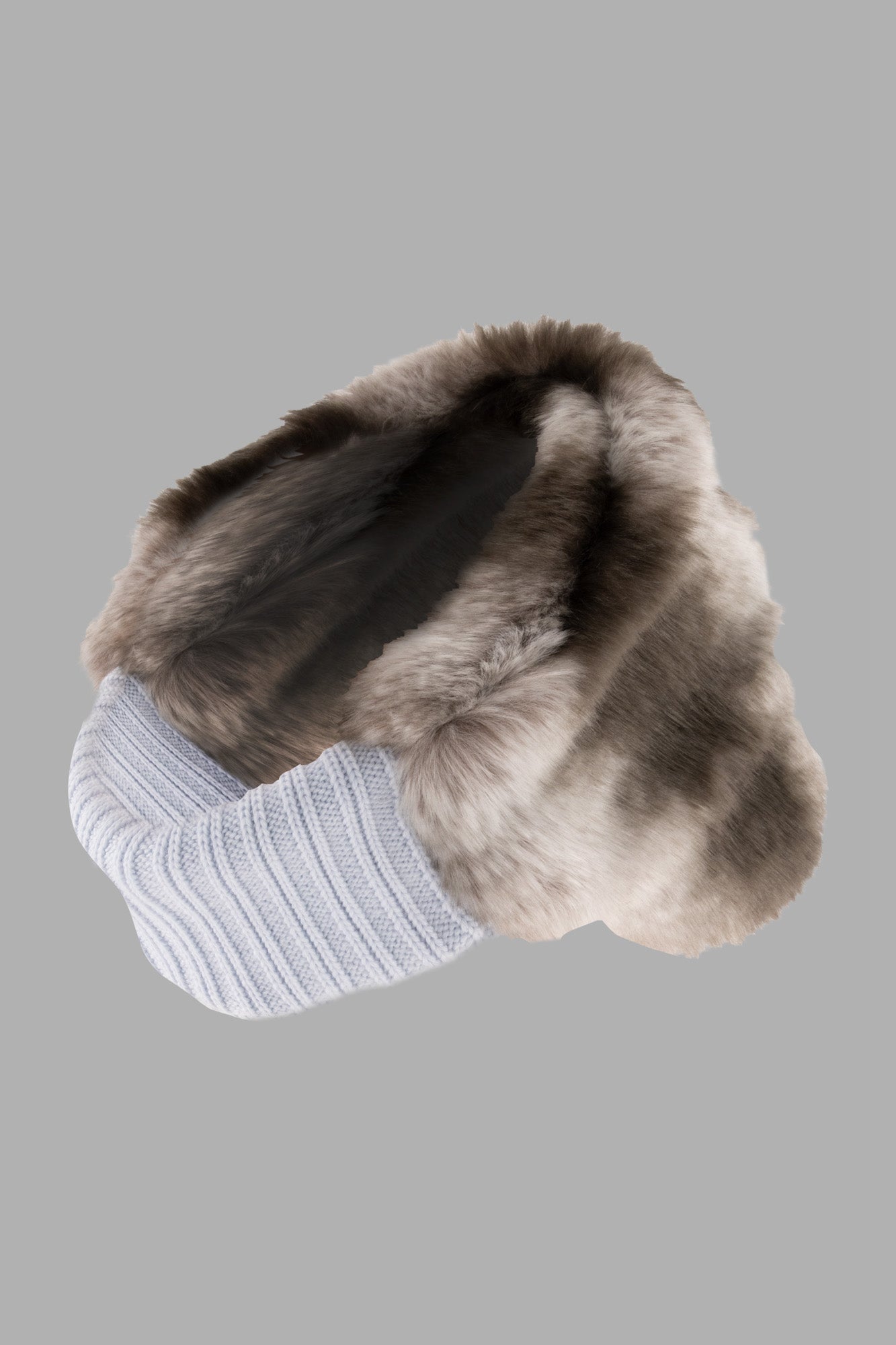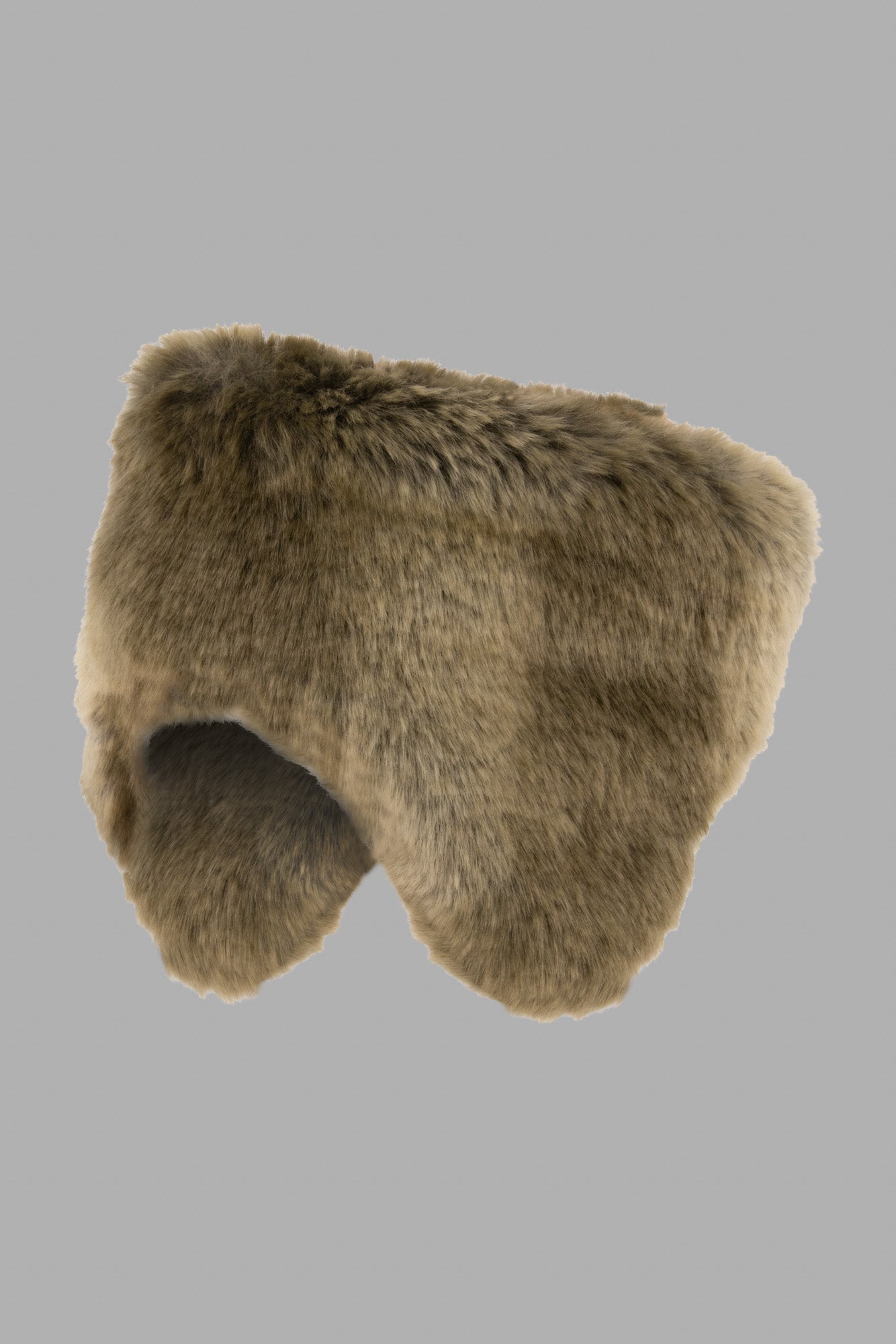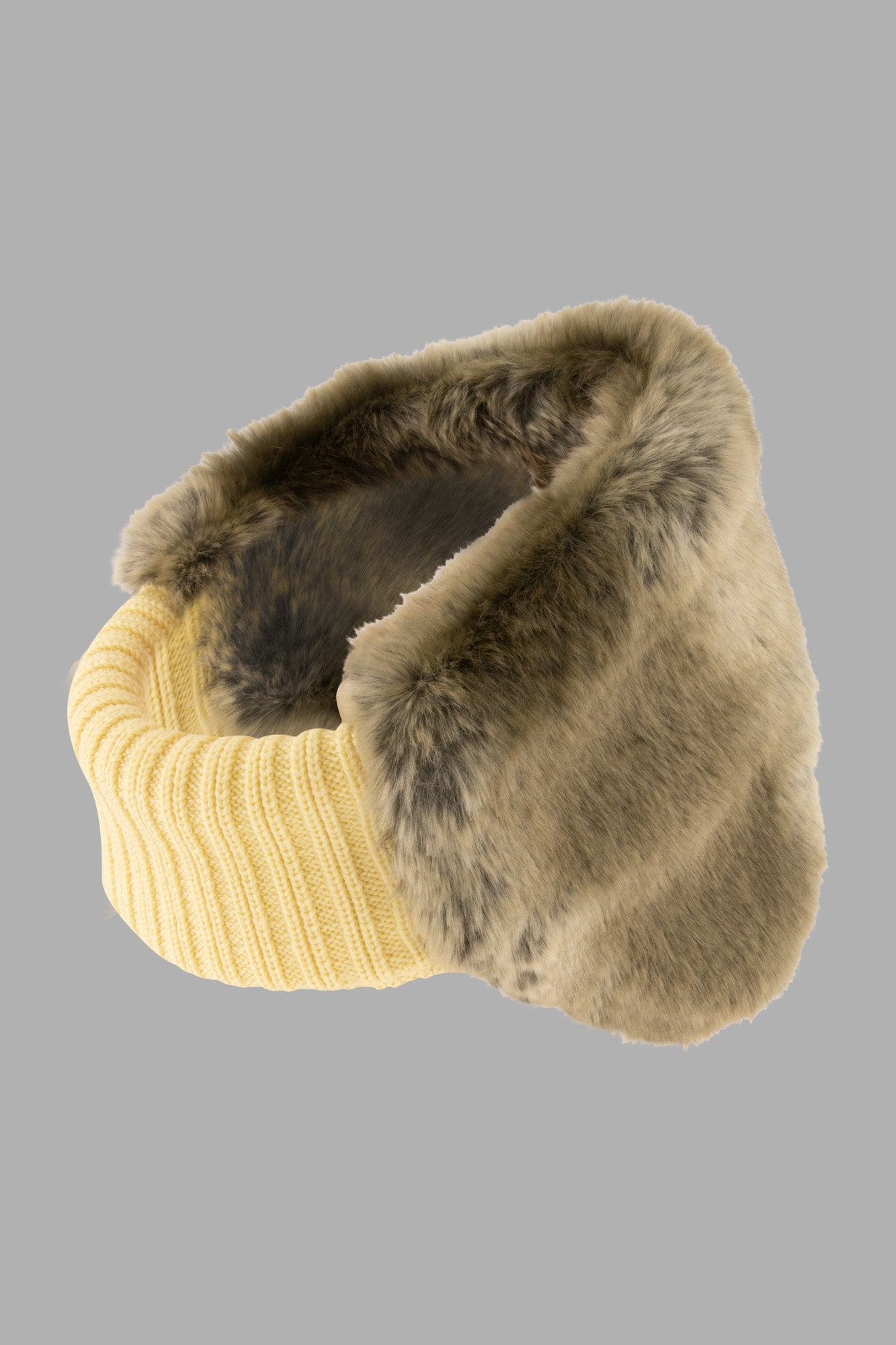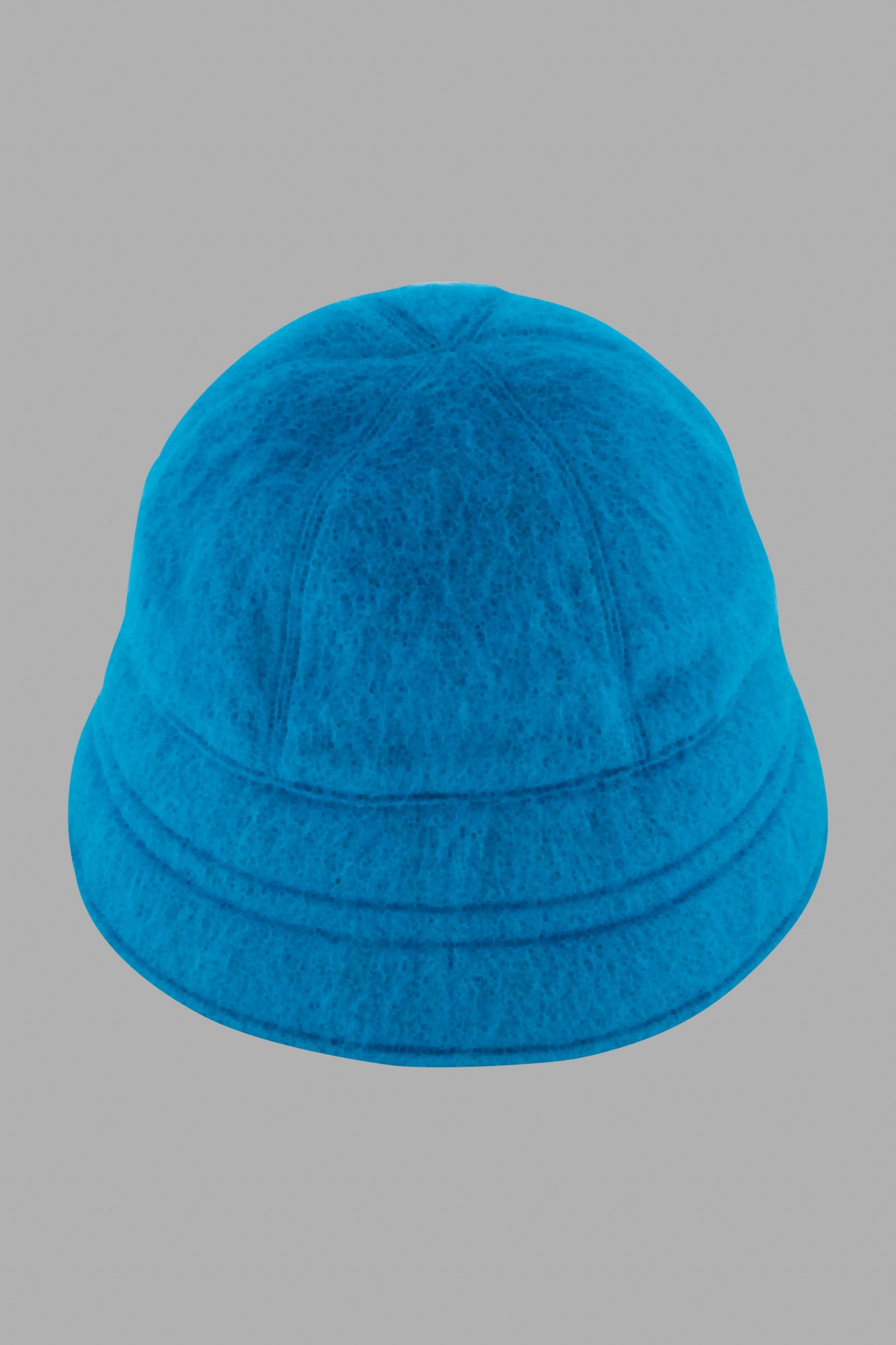Филтри
Kijima Takayuki е токийската шапкарска изработка в най-прецизната ѝ форма. На рафта: филцови федори с дисциплинирани корони, рафия и шапки с хартиена плитка с модерни отворени тъкани, и технически шапки с изчистен вид. Балансът на марката е ясен — кроене на ниво висша мода, ежедневна функционалност и размери в сантиметри, които наистина пасват. Очаквайте дискретни детайли, прецизирани периферии и шапки, които прилягат близо до главата, без да крещят.
Силует и конструкция
Формите са прецизни. Федорите използват централна гънка или корони с форма на капка с измерени височини, така че профилът да изглежда изправен, а не като костюм. Периферията е изрязана за пропорция — тясна за градски стил, средна и широка за слънце и линия. Шапките тип кофа варират от структурирани куполи до меко наклонени върхове; тъканта от рафия с форма на пчелна пита придава обем без тежест. Шапките включват 6-панелни бейзболни и моряшки или рибарски варианти, често с еластичен гръб или дискретен регулатор за комфорт.
Конструкцията е съществена. Моделите от High Line се оформят и завършват в ателието в Daikanyama с техники от висшата мода: ръчно оформяне върху дървени блокове, плътно шиене на плитки и внимателно моделиране, така че короната да лежи гладко, а периферията да не се набръчква. Много модели с подплата използват купро за гладко приплъзване и дишане; немоделирани слама и хартиени плитки поддържат главата хладна. Крайният ефект е изчистена архитектура на главата без остри ръбове.
Материали и завършек
Зимните шапки са изработени от филц от заешка и бобърска козина; и двата приемат стегнат блок, докато по-високото съдържание на естествени масла в бобъра увеличава водоотблъскващите свойства и паметта на формата. Летните и курортните модели залагат на растителни и хартиени влакна: рафия, сизал, бунтал, абака и шнурове от хартиена плитка. Хартиената плитка е лека и устойчива, с меко усещане, което се запазва, ако не се смачка. Техническите платове се използват при шапки и сафари или кофи — Ventile® памук за плътни, устойчиви на атмосферни влияния обвивки; памучна тъкан тип пишеща машина с деликатно уретаново покритие за еластичност; и смески за представяне като Solotex × Ecopet за разтегливост и възстановяване с рециклирано съдържание.
Детайлите са минимални: ленти от грозгрейн, тесни кожени връзки, тонални отвори. Вътрешността е изчистена — лентичките за пот обикновено са от грозгрейн или кожа; избрани колаборации добавят сатенени или купро подплати. Завършекът е матов и модерен, дори при официални форми, така че шапките се съчетават с костюми или дънки без да изглеждат винтидж.
Подписи и икони
High Line. Нивото, изработено в ателието, където филците от кожа и редки сламени плитки се превръщат в тихо прецизни федори и шапки боатър, произведени в малки серии с блокиране и ръчна работа на ниво висша мода.
Рафия шапка тип кофа с пчелна пита. Лятна шапка с отворена тъкан и въздушна текстура, с периферия, която леко се накланя надолу, за да осигури сянка без да скрива лицето.
Шапка с хартиена плитка, мека. Заоблен стил с периферия надолу, който се сгъва леко и възвръща формата си с пара.
Технически шапки и сафари шапки. Ventile® и други плътни памуци придават структура и устойчивост на атмосферни влияния; шестпанелни шапки с еластичен гръб стоят ниско и изчистено.
Колаборации. Продължаваща работа с японски марки носи материални иновации: филцови федори от заешка козина и шапки с подплата от вълна с UNDERCOVER или TAKAHIROMIYASHITA TheSoloist., стегнати ленени шапки с YLÈVE, шапки от тъкана хартия с Sunspel и работна шапка, вдъхновена от Ryuichi Sakamoto.
Как да я носите сега
Работна униформа. Централна гънка филц от бобър, неструктуриран блейзър, тесни панталони, изчистени кожени маратонки. Шапката изостря линията без допълнителни слоеве.
Вечер. Черен филц от заешка козина федора с дълго палто и минимален плетен пуловер. Дръжте бижутата малки, за да рамкират короната и периферията лицето.
Уикенд. Рафия шапка тип кофа с пчелна пита, стегната поплинена риза, прави дънки с ръб, рибарски сандал. Текстурата прави стила.
Пътуване или преходно време. Ventile® кофа или шапка, лека парка, плисирани панталони. Добавете мека шапка с хартиена плитка в калъфа за топли спирки; оформете с пара при пристигане.
Бележки за пасване и размери
Марката използва размери в сантиметри в рамките на номерирани серии. Като правило: 1 = 57 см, 2 = 59 см, 3 = 61 см; избрани колаборации предлагат по-големи размери, а някои модели са един размер около 58 см. Шапките с еластичен гръб са прилепнали, но не стегнати; ако сте между размери при филците, изберете по-голям и коригирайте с тънка пяна под лентата за пот.
Федори. Височината на короната е измерена и балансирана; изберете ширината на периферията, която наистина ще носите. Тясната е градска, средната е универсална, широката е подходяща за слънце и драматична.
Шапки тип кофа и сафари шапки. Вярно на сантиметъра. Отворената тъкан от рафия се усеща по-просторна; плътните плитки и платове са по-стегнати.
Шапки и плетива. Плътни и еластични; шапки с уши и дълги шапки са умишлено стегнати, за да задържат формата.
Грижа и дълготрайност
Следвайте етикета за грижа първо. За филцови шапки от кожа, почиствайте с мека четка за шапки, съхранявайте на рафт или в кутия и избягвайте да хващате короната при слагане и сваляне. Лек дъжд се отблъсква от плътните филци, но не ги намокряйте; ако се намокрят, разклатете, оформете периферията върху равна повърхност и оставете да изсъхне на въздух далеч от топлина, след което почистете с четка. За рафия, сизал, бунтал и хартиени плитки, поддържайте сухи; премахвайте прах с мека четка или кърпа и съхранявайте далеч от пряка слънчева светлина. Техническите памучни шапки обикновено могат да се почистват на място; избрани памучни модели са подходящи за ръчно пране при наличие на етикет — оформете и оставете да изсъхнат на въздух.
Дълготрайността е вградена. Магазинът на марката в Daikanyama предлага оформяне и основни ремонти като подмяна на панделки и ленти за пот. Пътнически парен уред освежава хартиени плитки и филц; избягвайте висока топлина и никога не смачквайте блокирана шапка, освен ако моделът не е изрично предназначен за навиване.
Наследство и днес
Дизайнерът Takayuki Kijima се обучава при майстор шапкар Akio Hirata в периода 1990–1994, усвоявайки европейски техники от висшата мода, докато изработва шапки за къщи като Issey Miyake, Yohji Yamamoto и Comme des Garçons. Той основава ателие в Daikanyama през 1995 и открива магазин на марката през 1999. През 2013 предшественикът coeur е преименуван на KIJIMA TAKAYUKI, разширявайки мъжките и дамските линии. През 2017 е лансирана висококласната линия High Line, за да формализира методите на ателието и работата с редки материали. Студиото представя колекции два пъти годишно в Токио и Париж и продължава да си сътрудничи с японски дизайнери от UNDERCOVER и FACETASM до TAKAHIROMIYASHITA TheSoloist., ART&SCIENCE, Sunspel и YLÈVE.
Отговорност, накратко
Отговорността тук е занаят, който трае, и материали, използвани с намерение. Answer It рециклира винтидж основи и детайли на шапки в нови дизайни, удължавайки живота им, като същевременно запазва работата в умели ръце. Техническите тъкани включват опции, направени с рециклирани влакна (например Solotex × Ecopet). High Line се произвежда в ателието в Токио, а марката предлага услуги за ремонт и оформяне, за да удължи носенето. Без големи претенции — просто шапки, проектирани да се носят, поддържат и носят отново.

